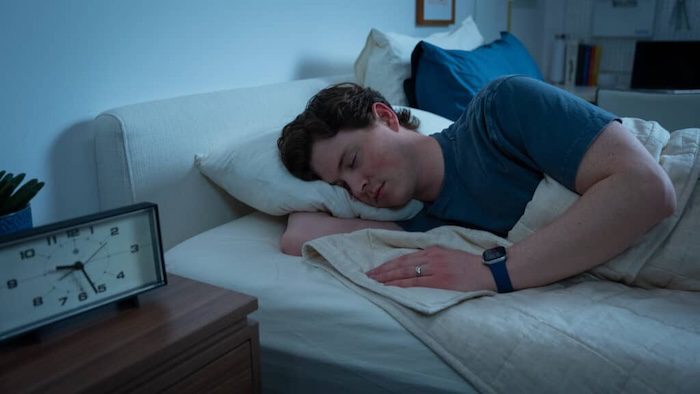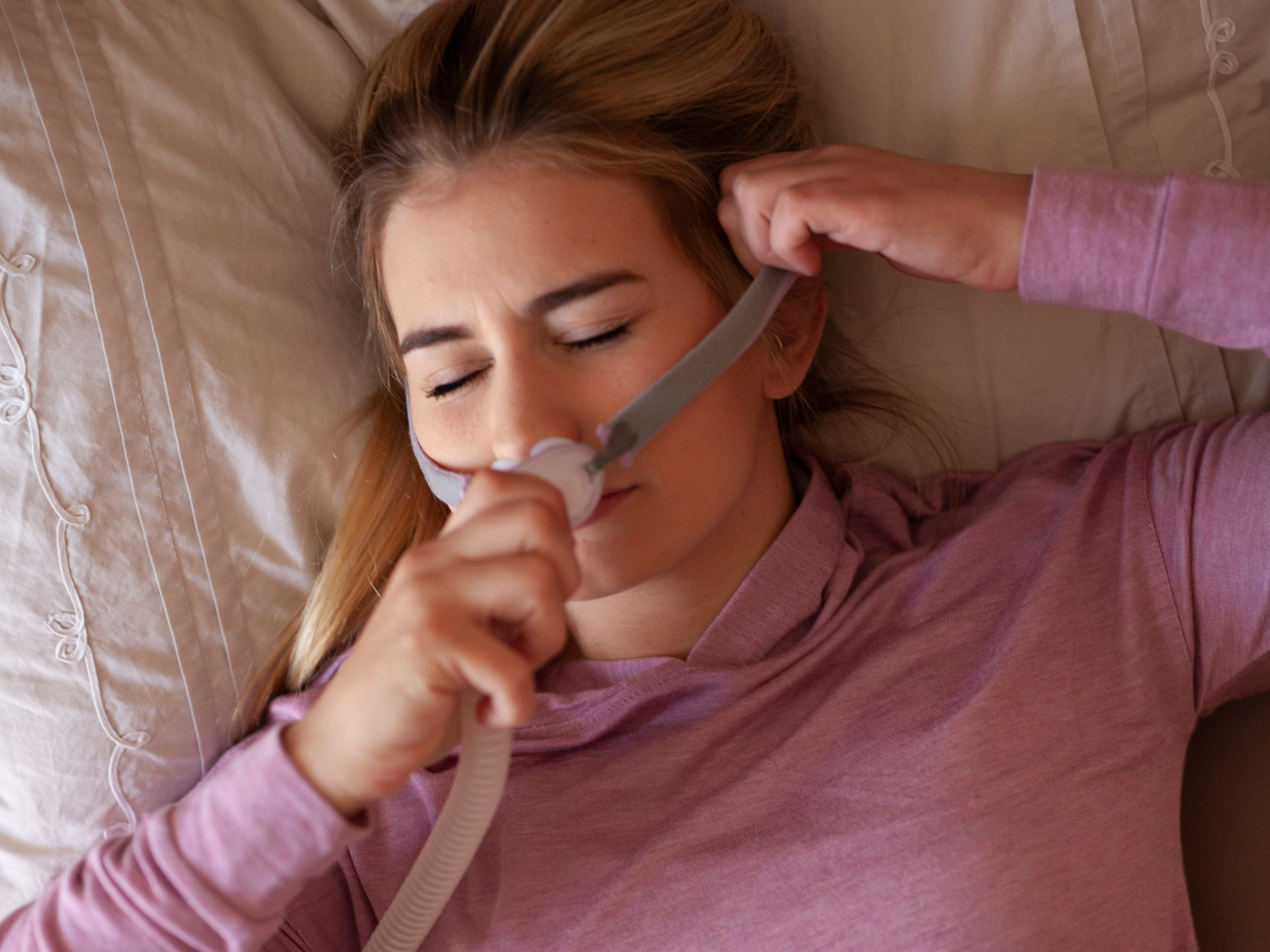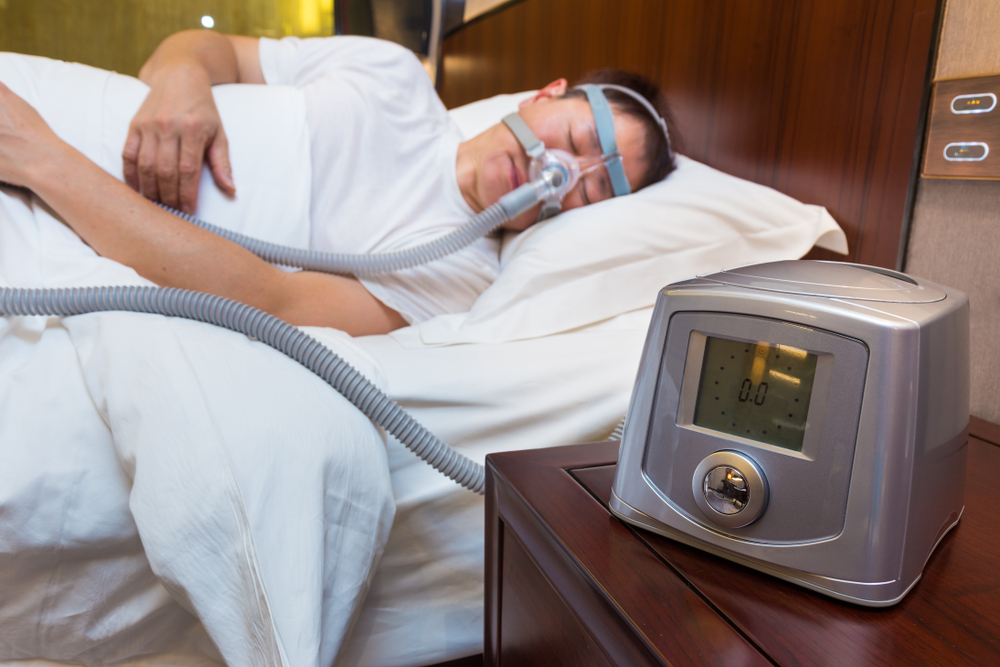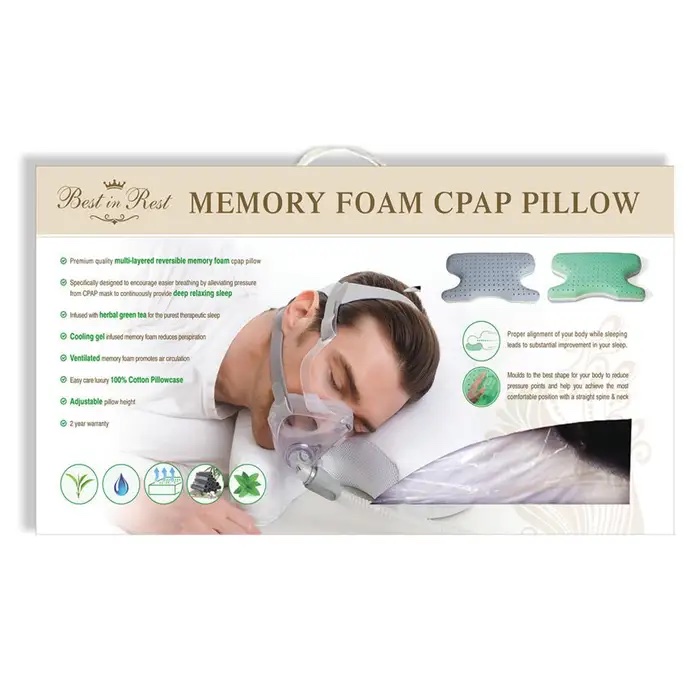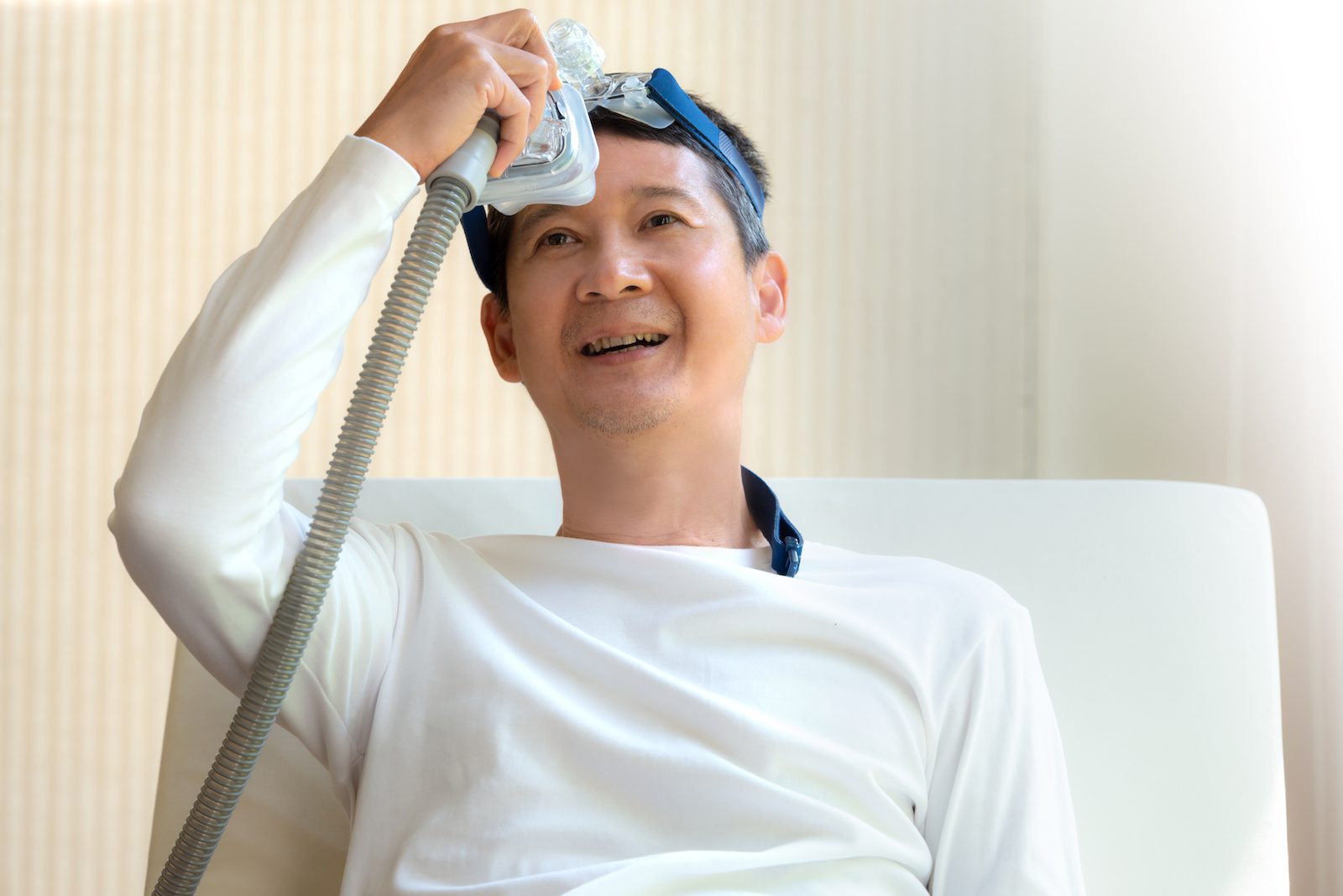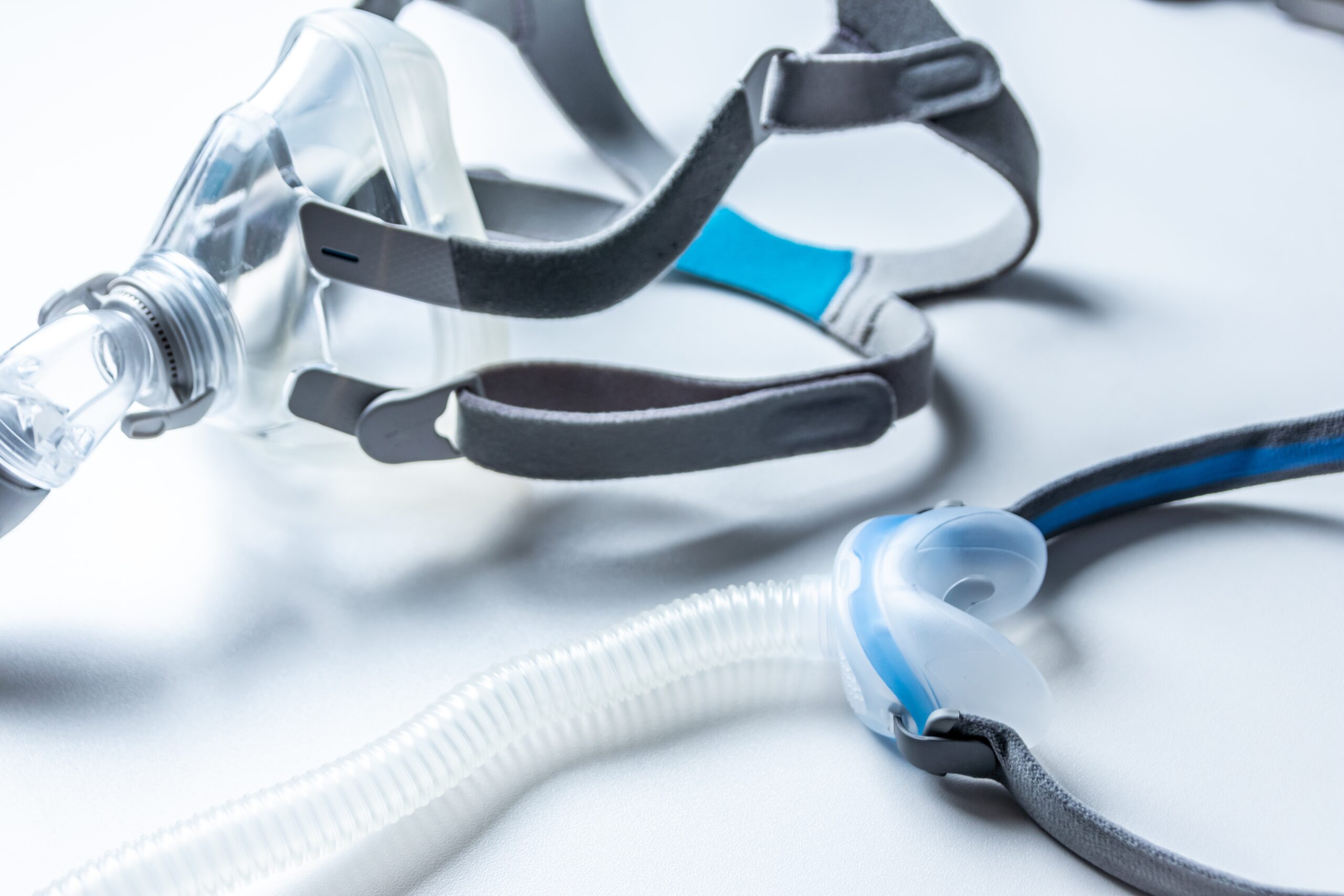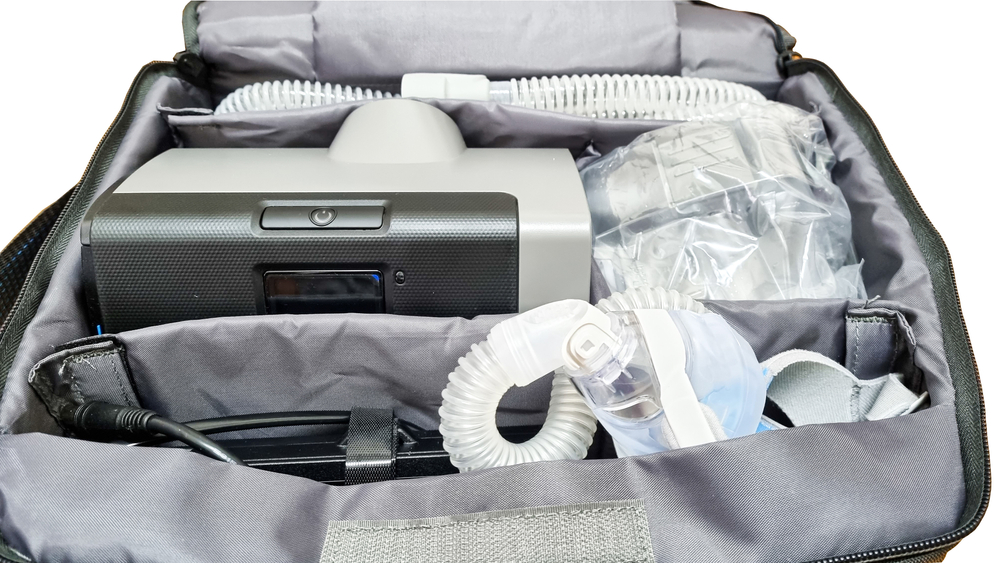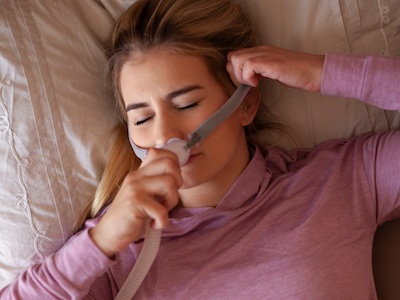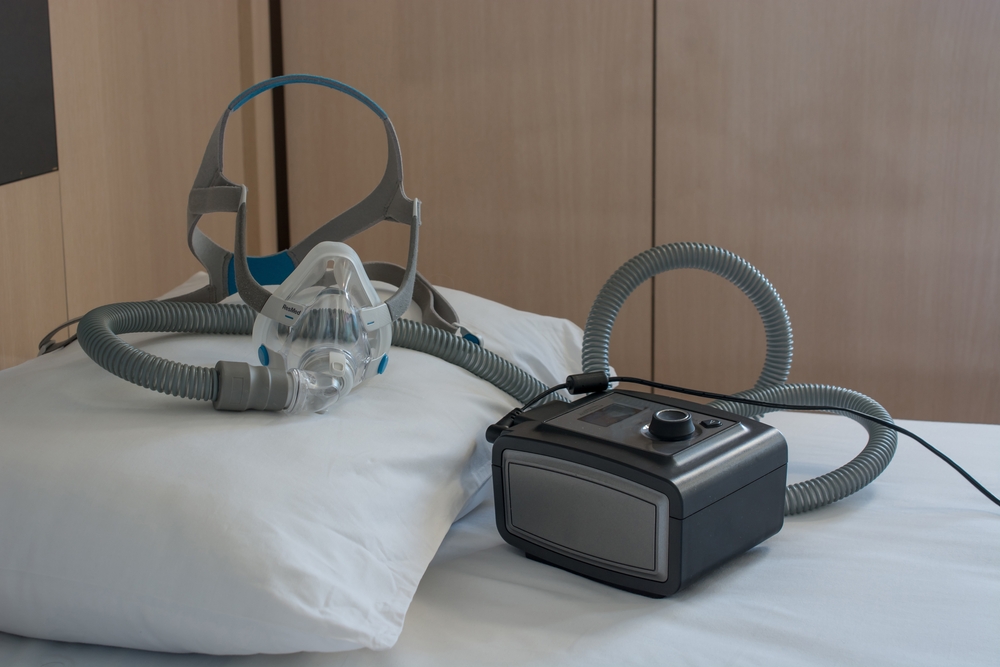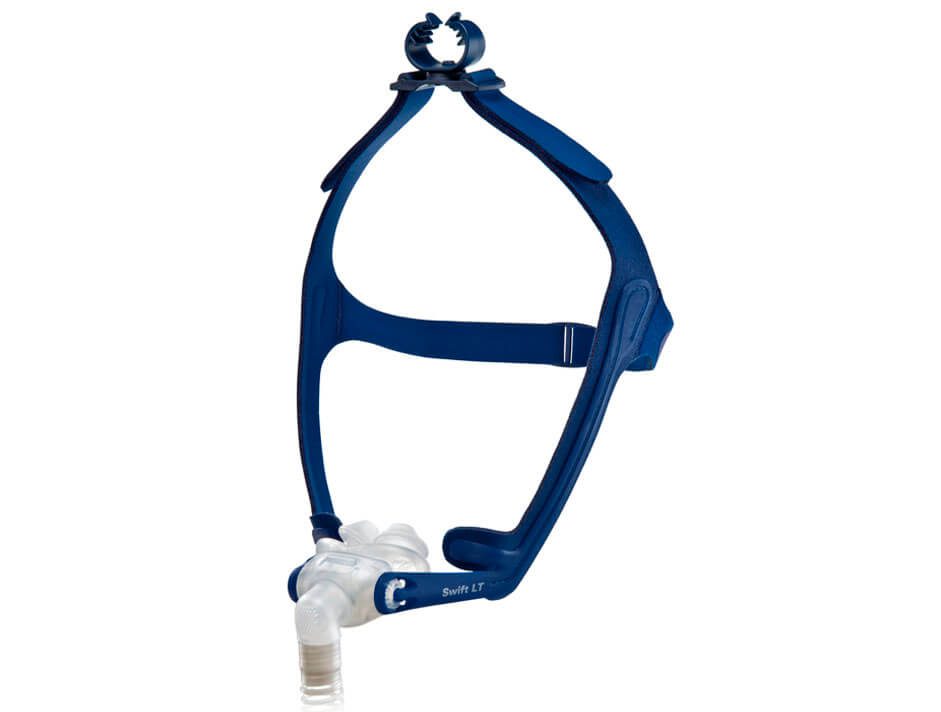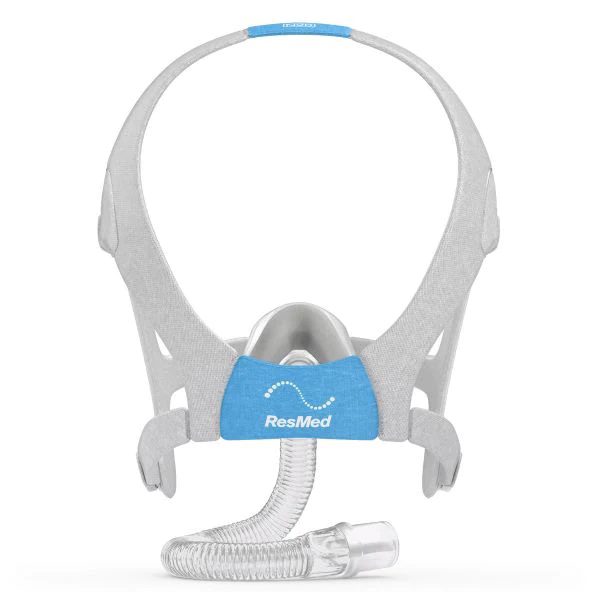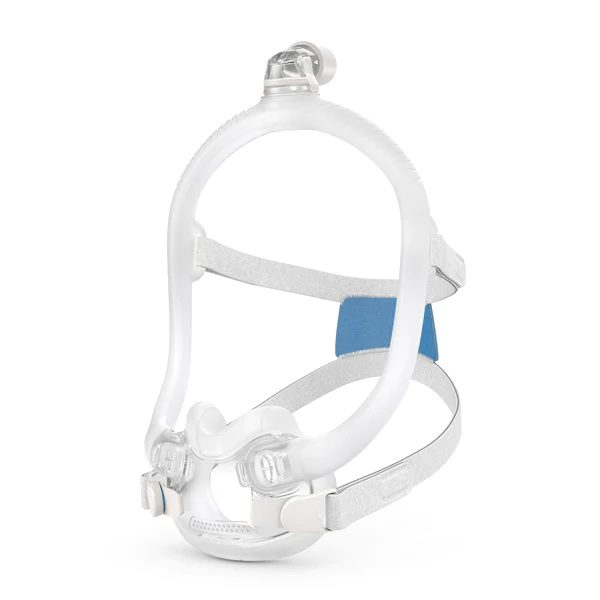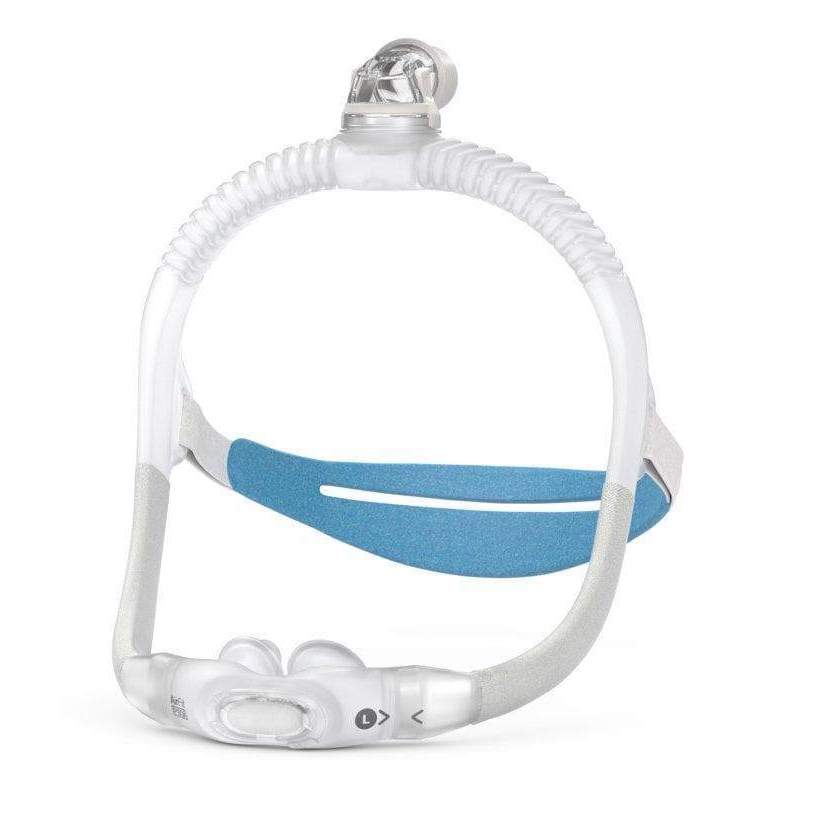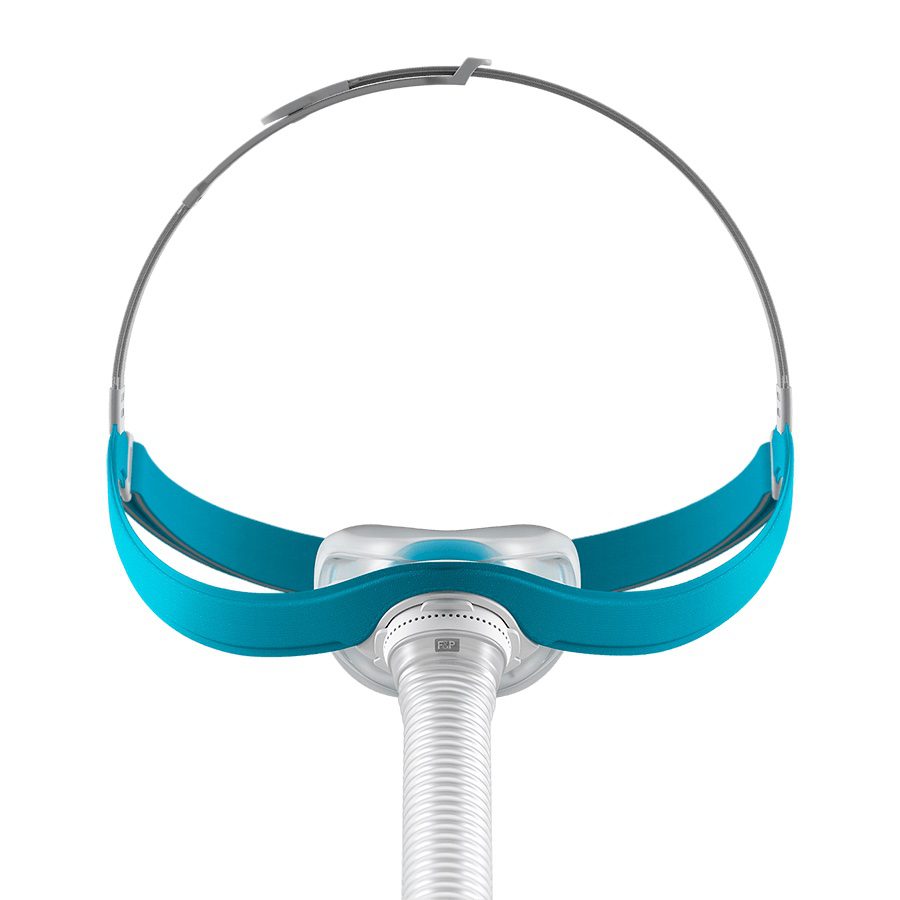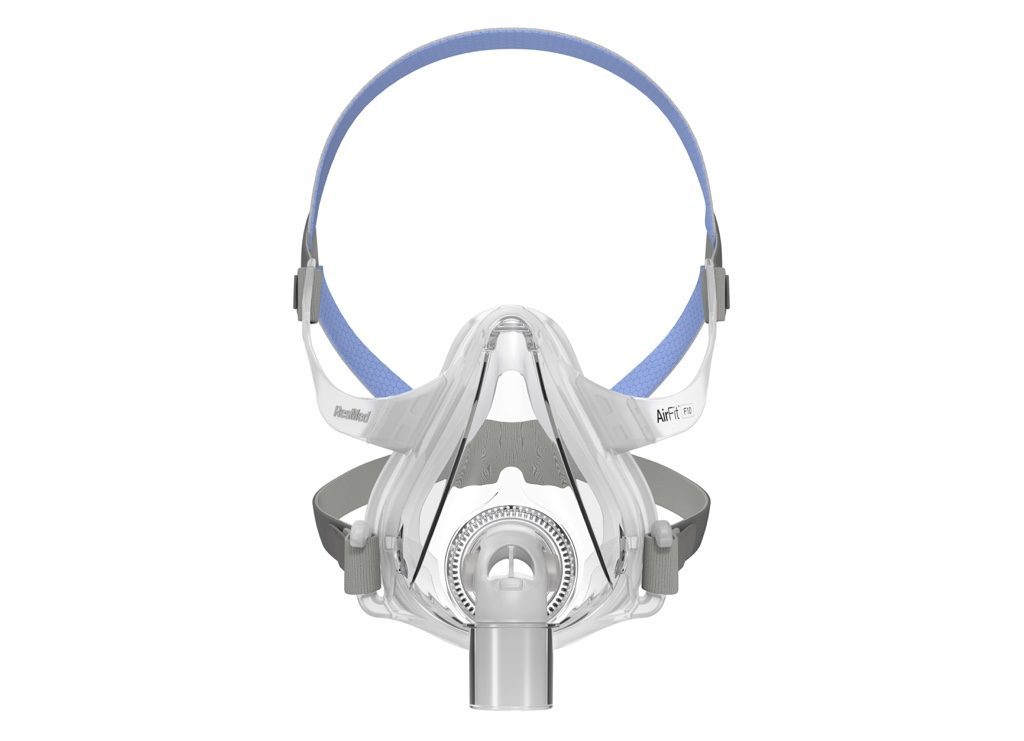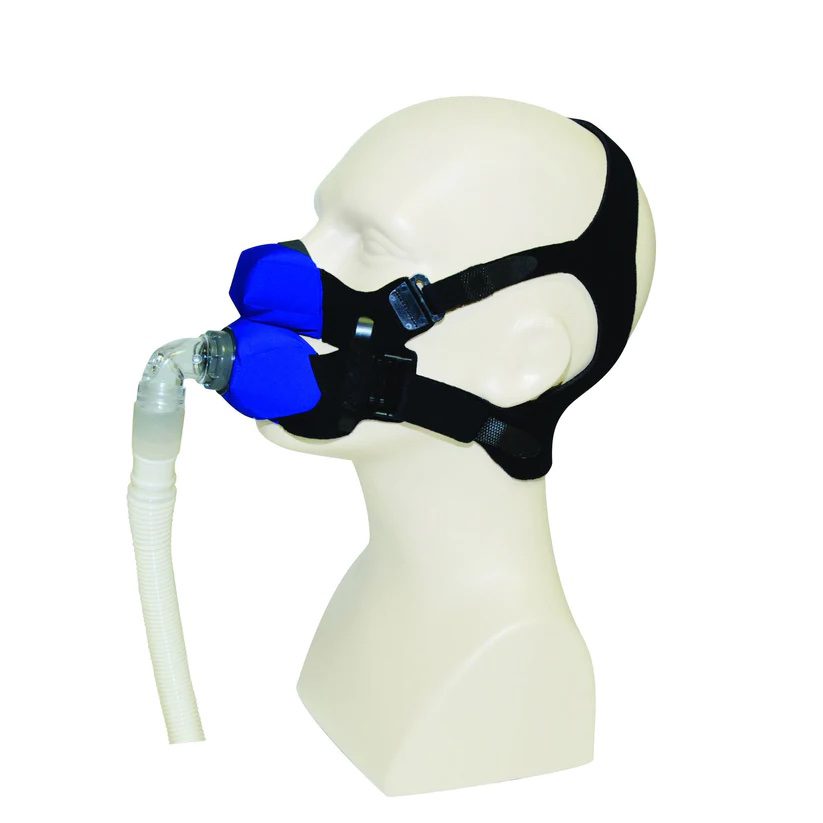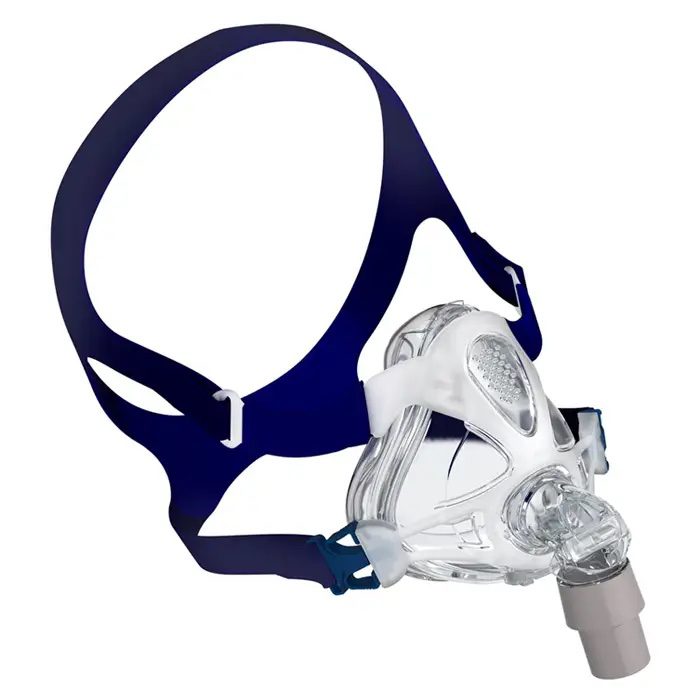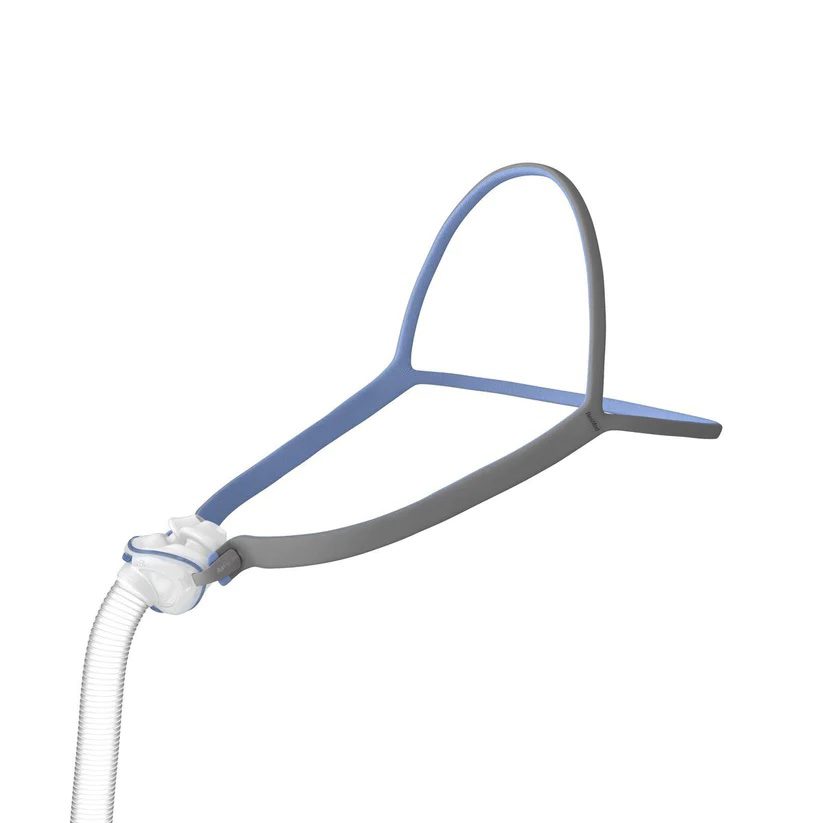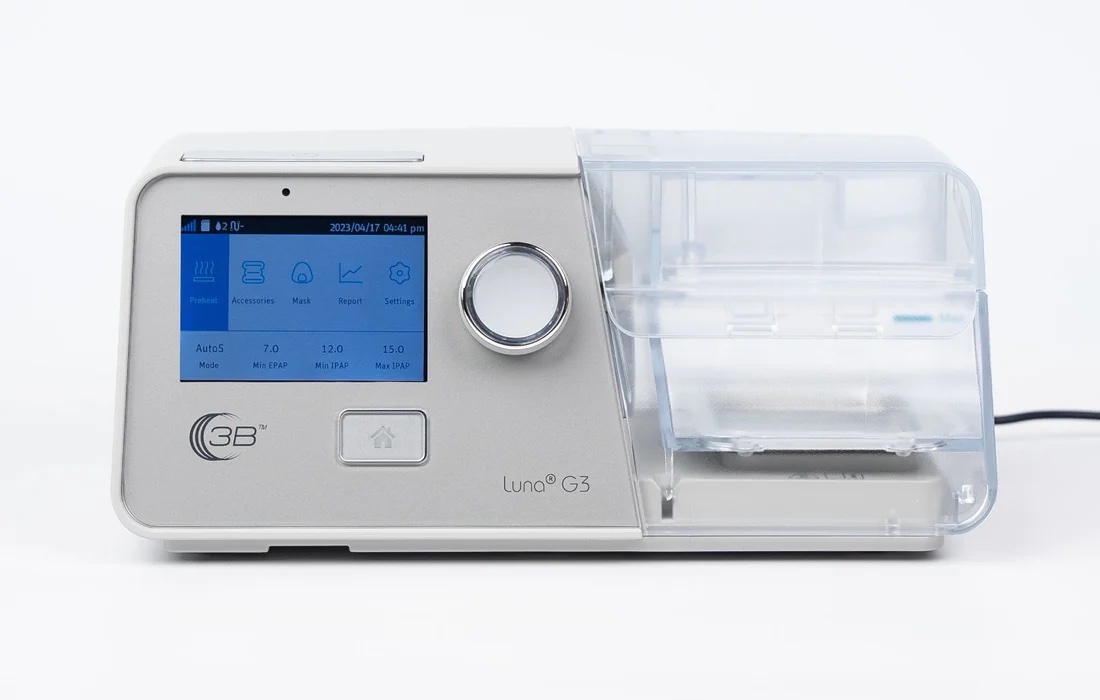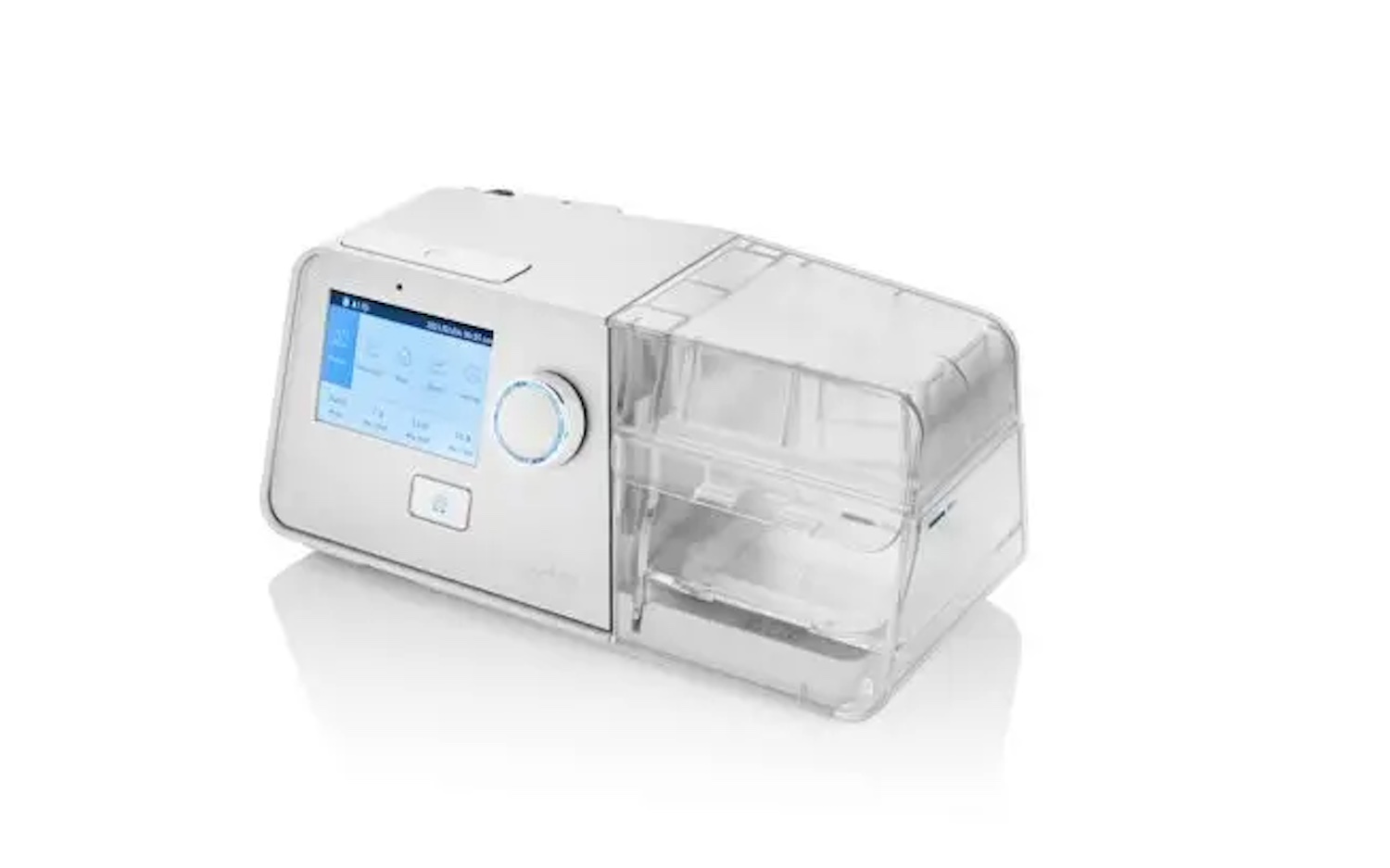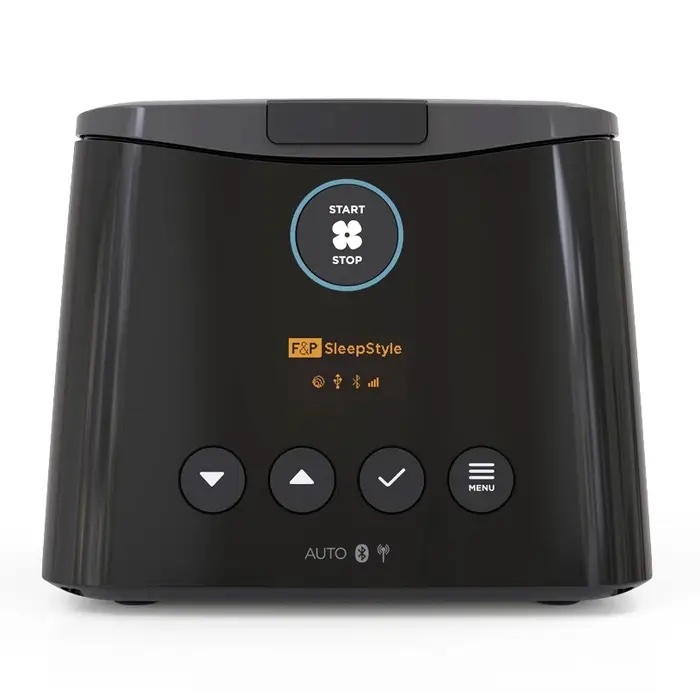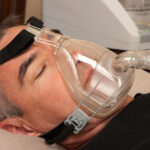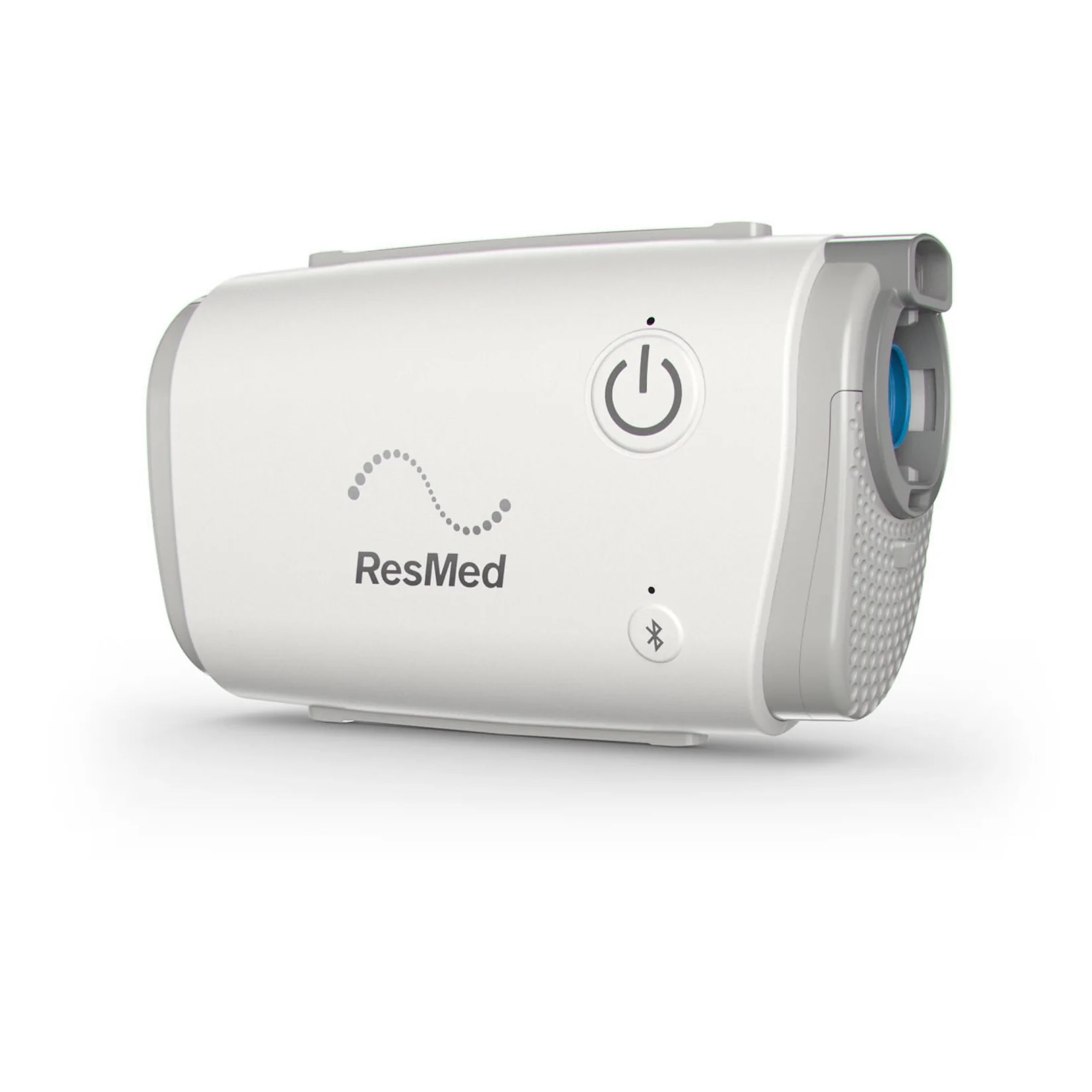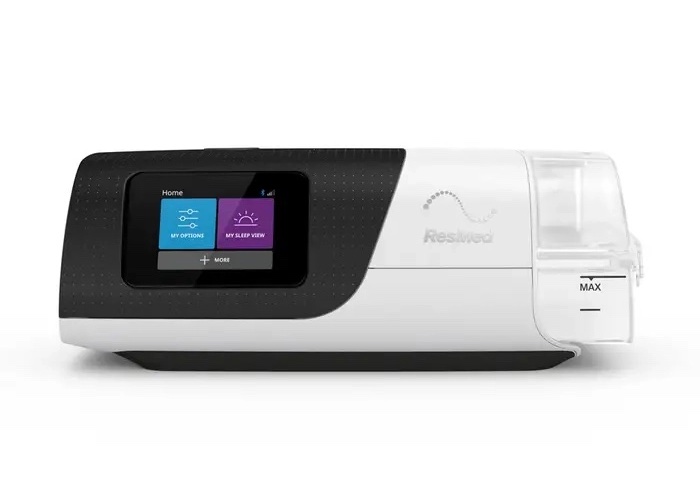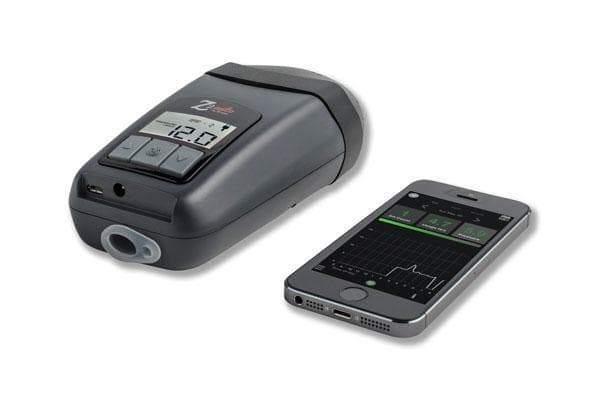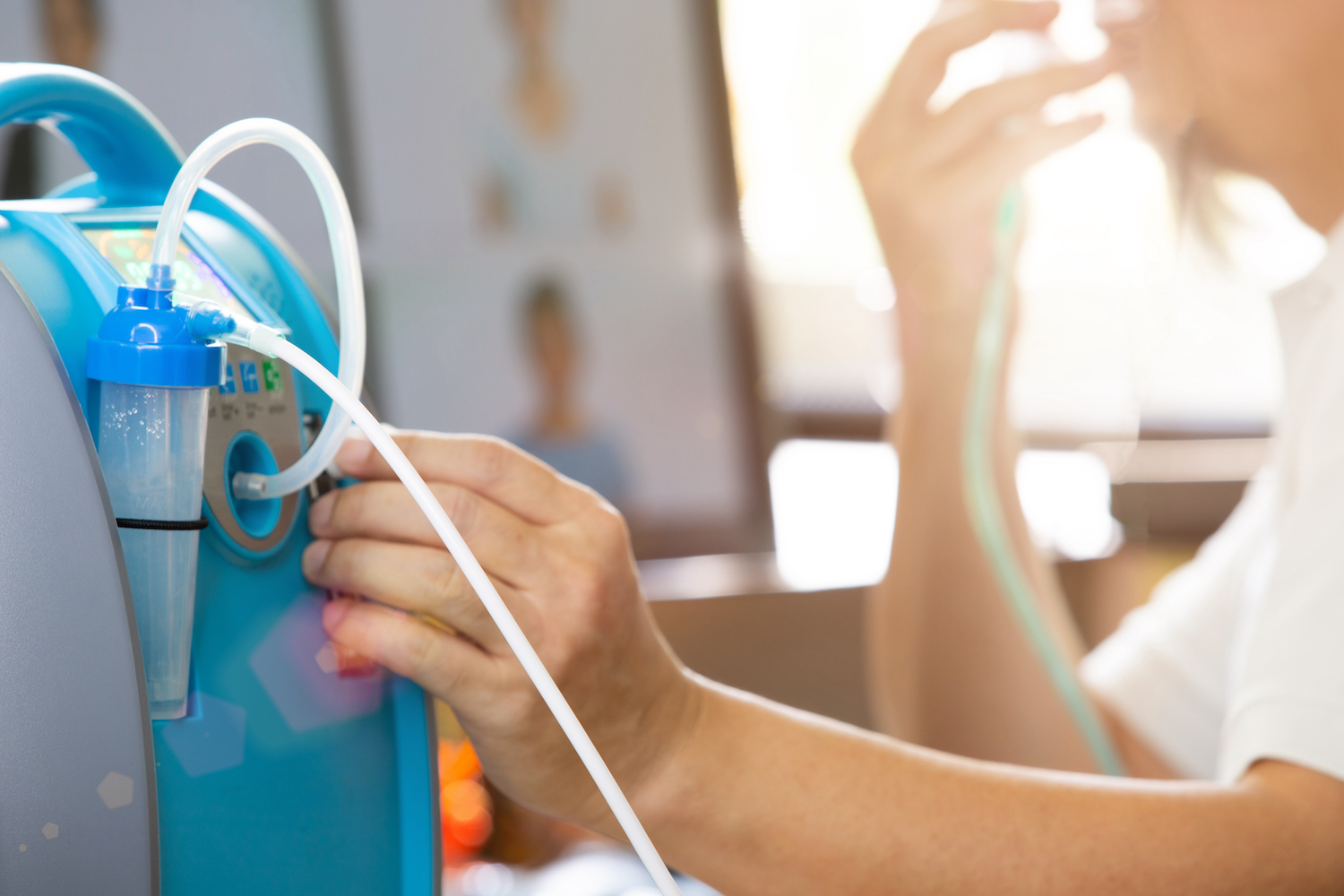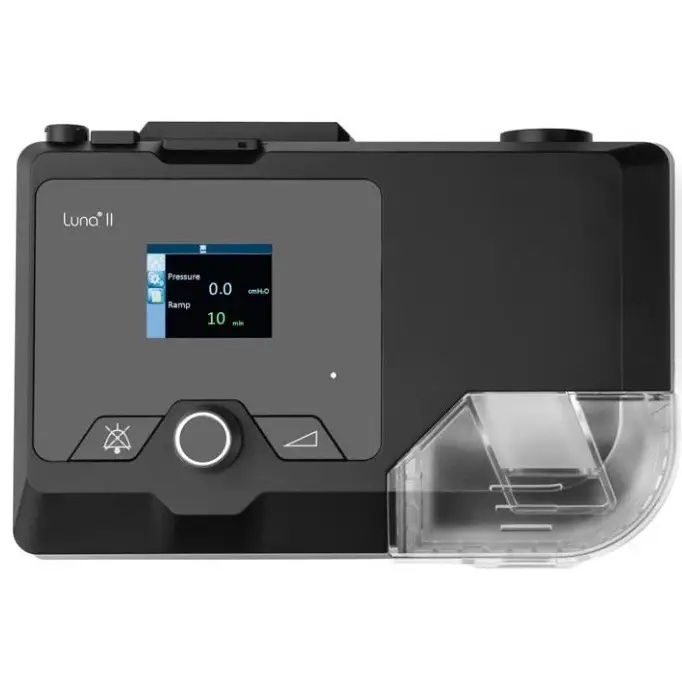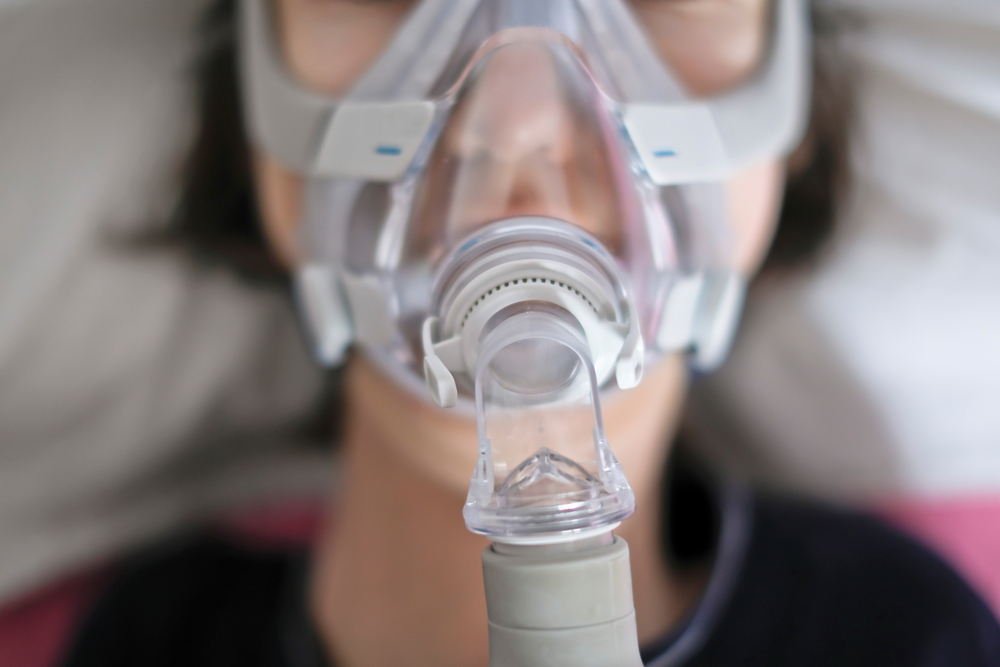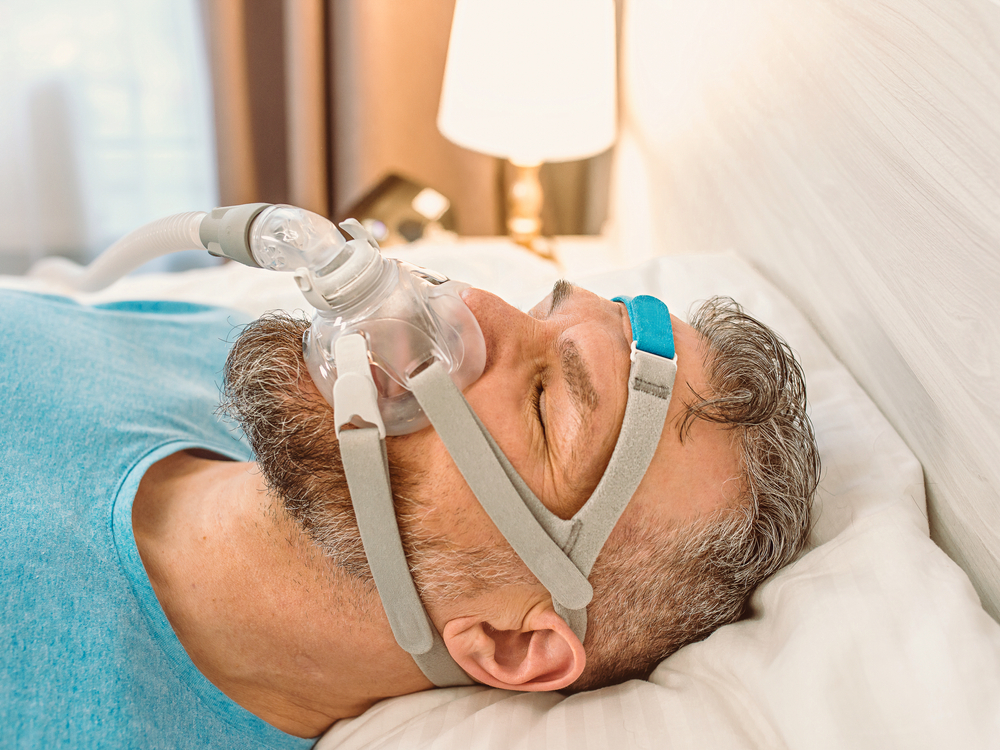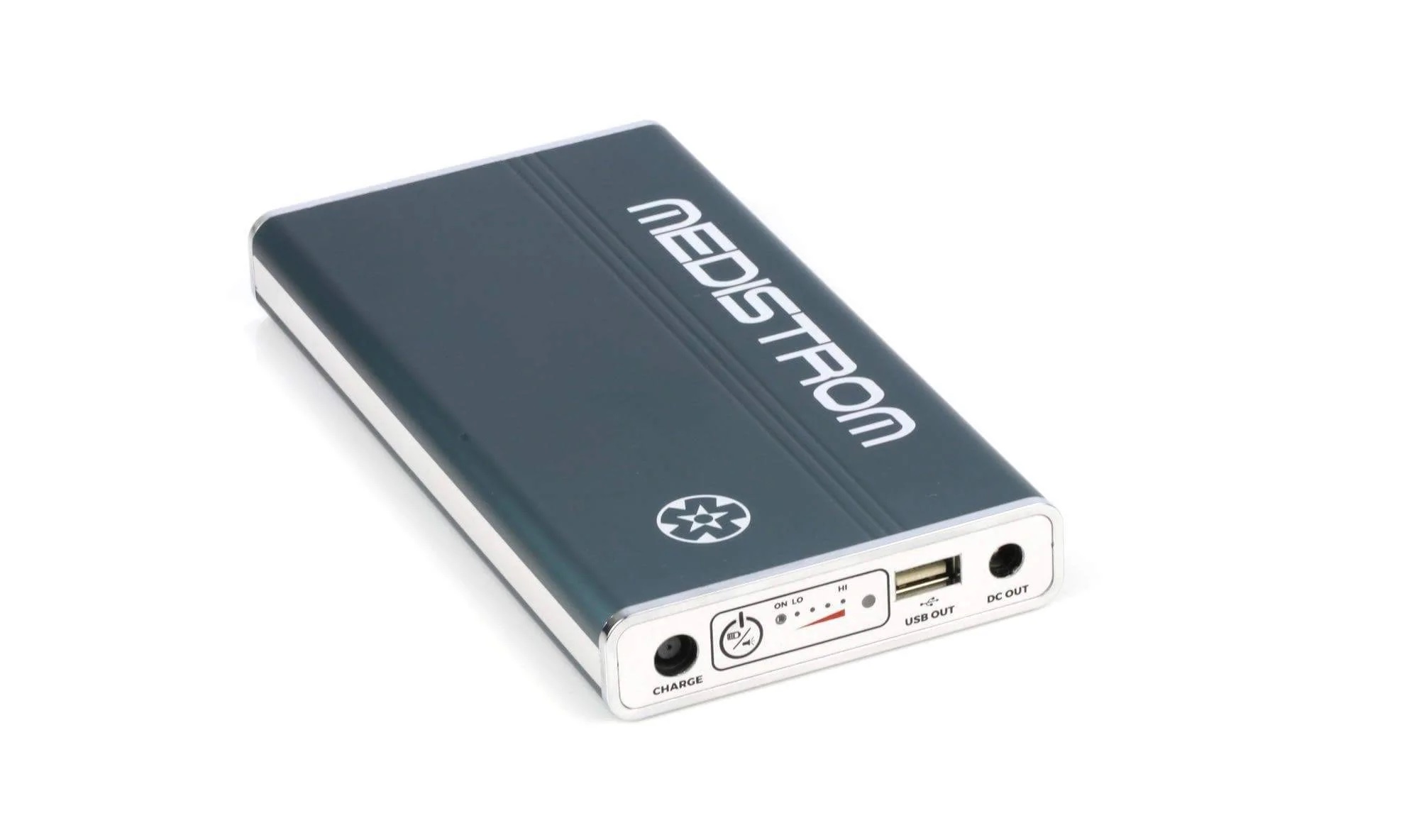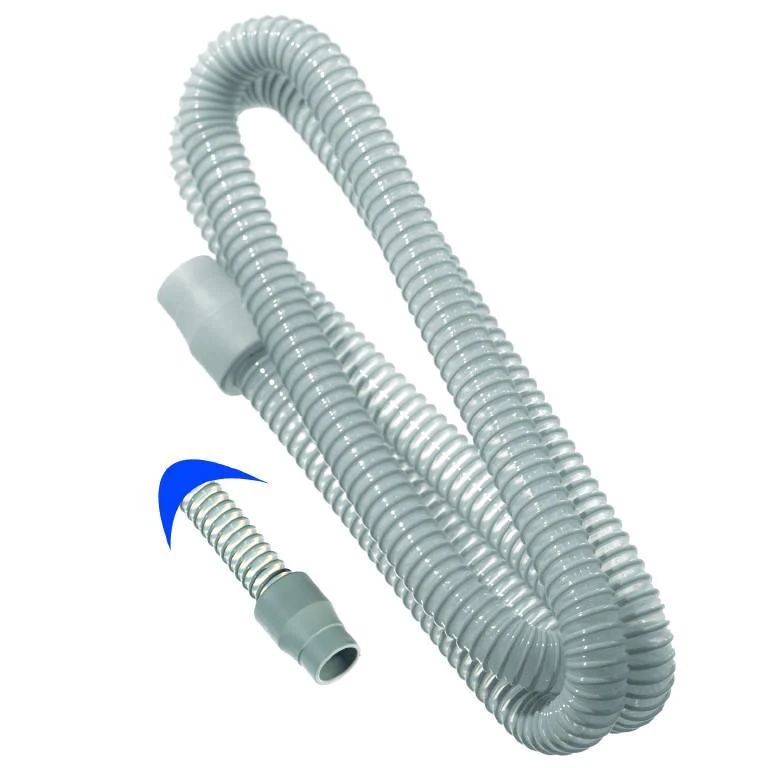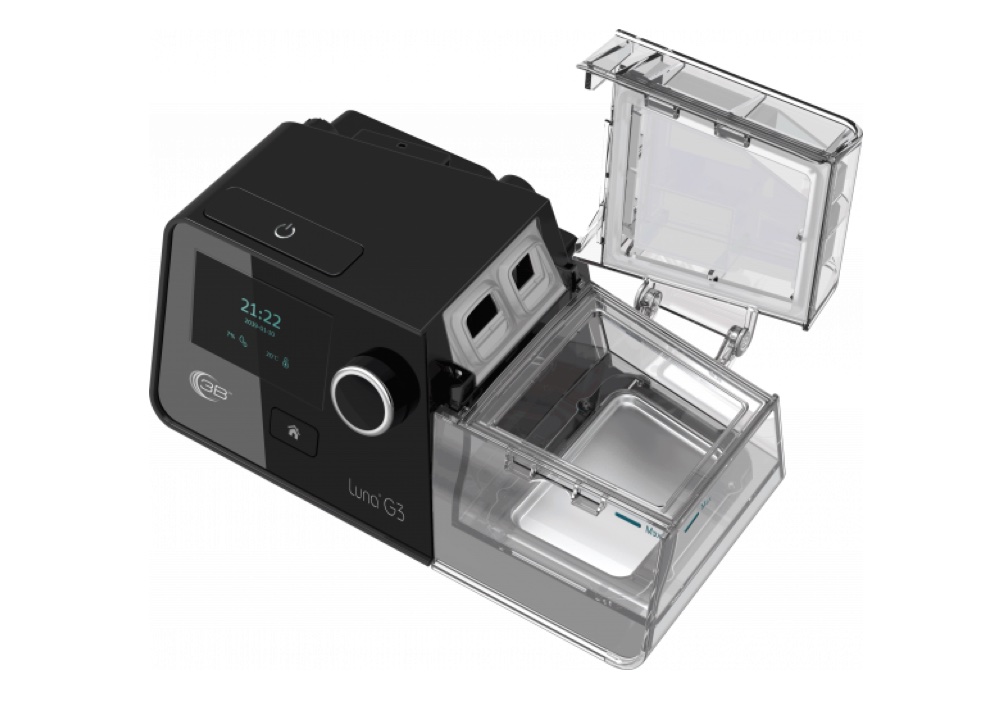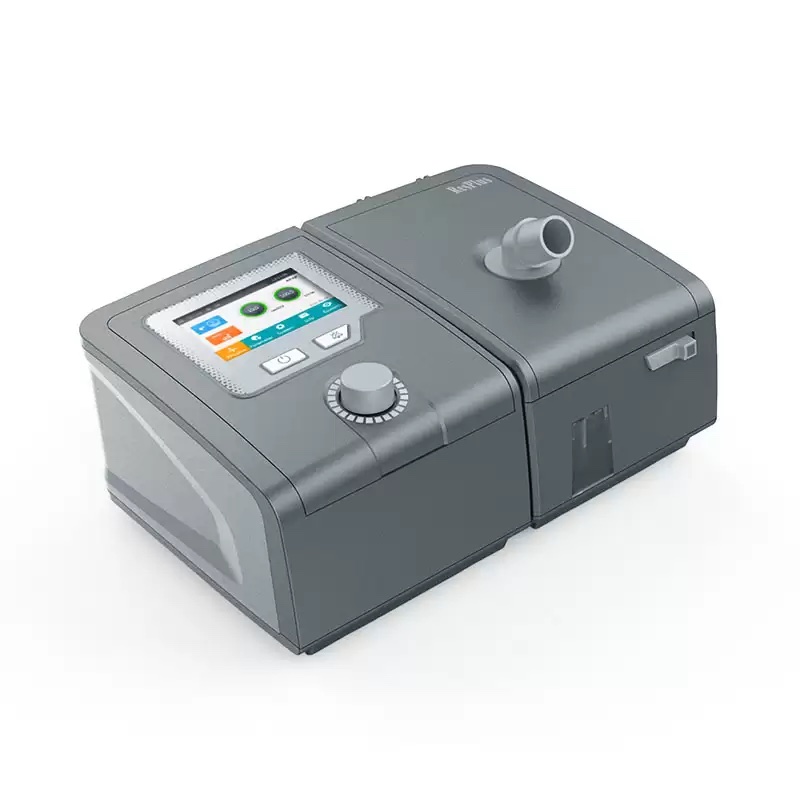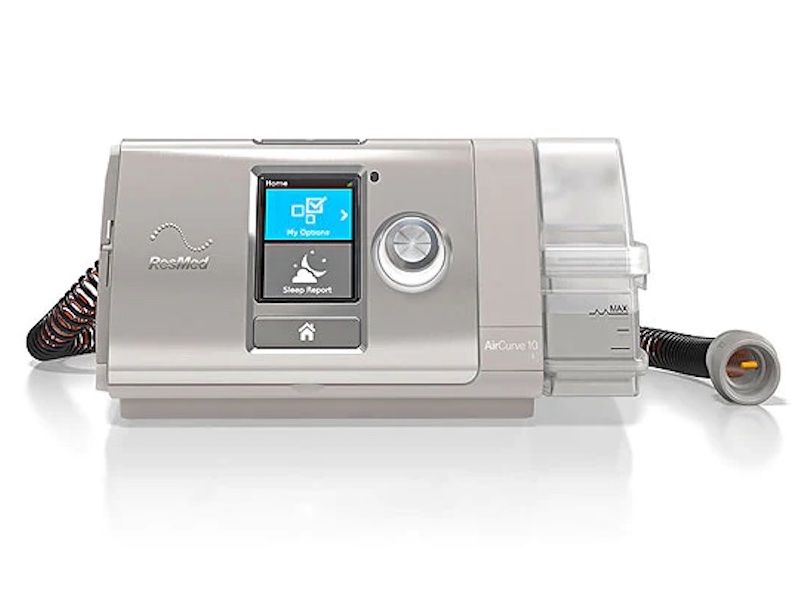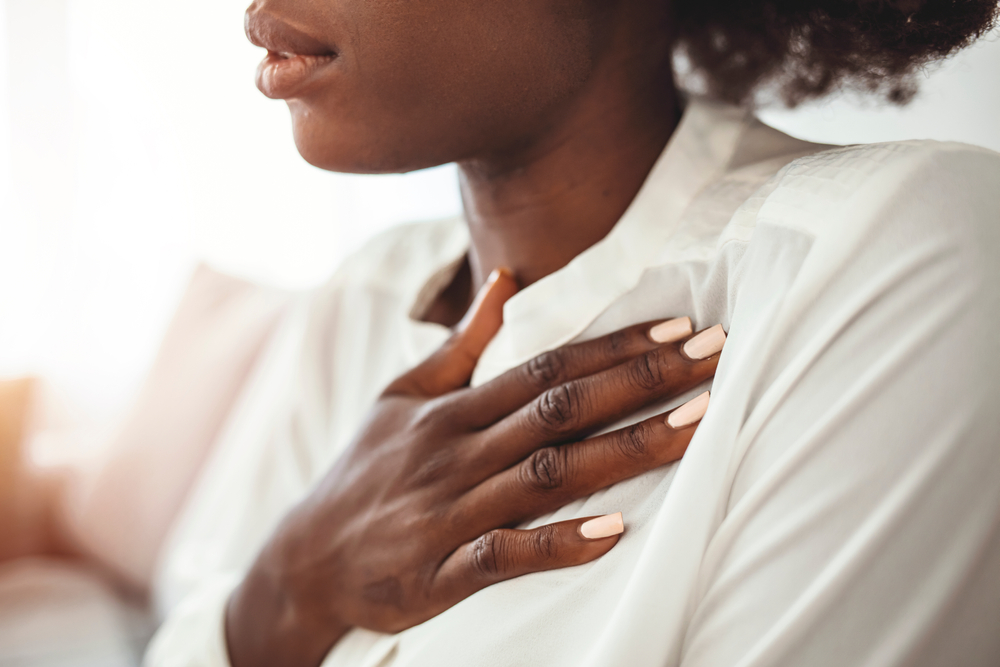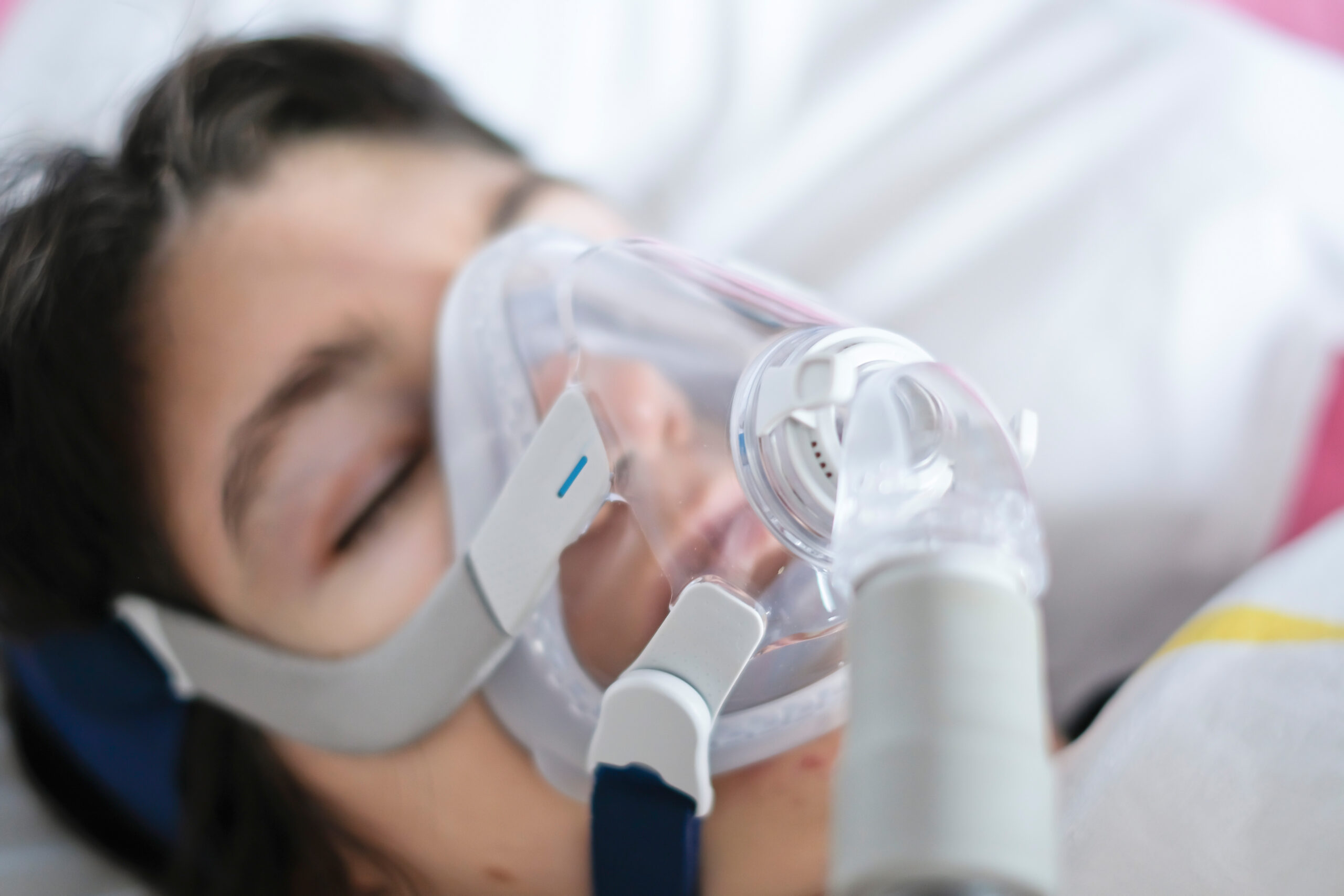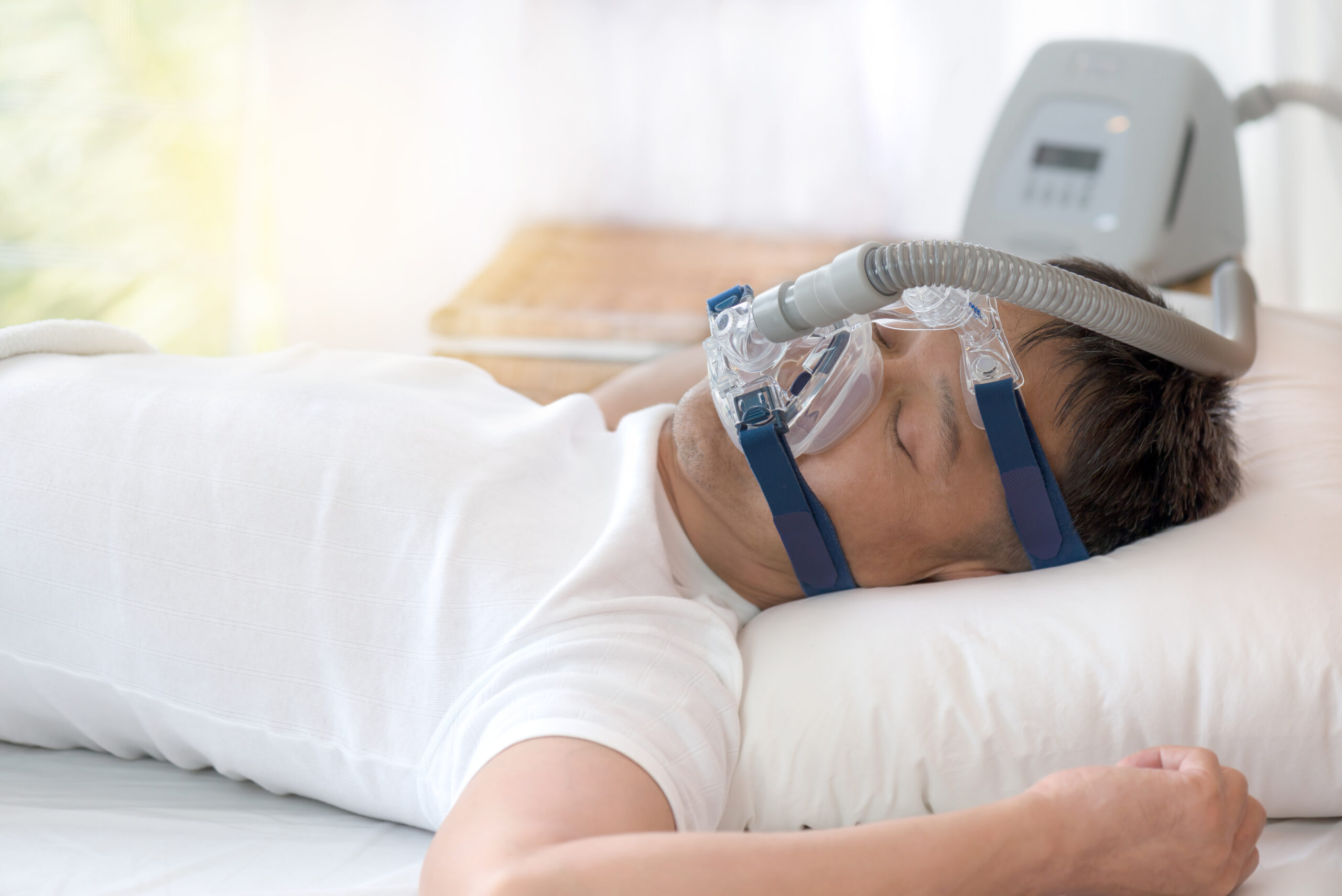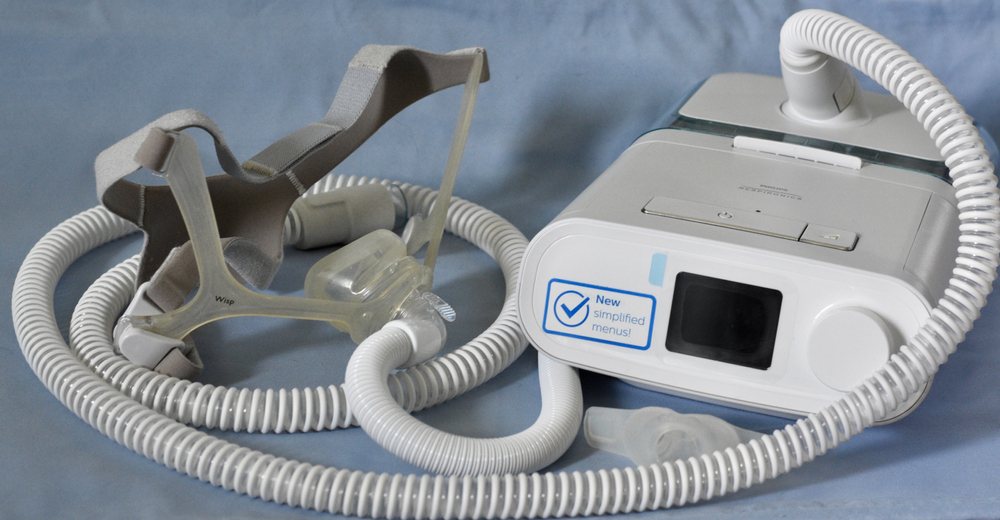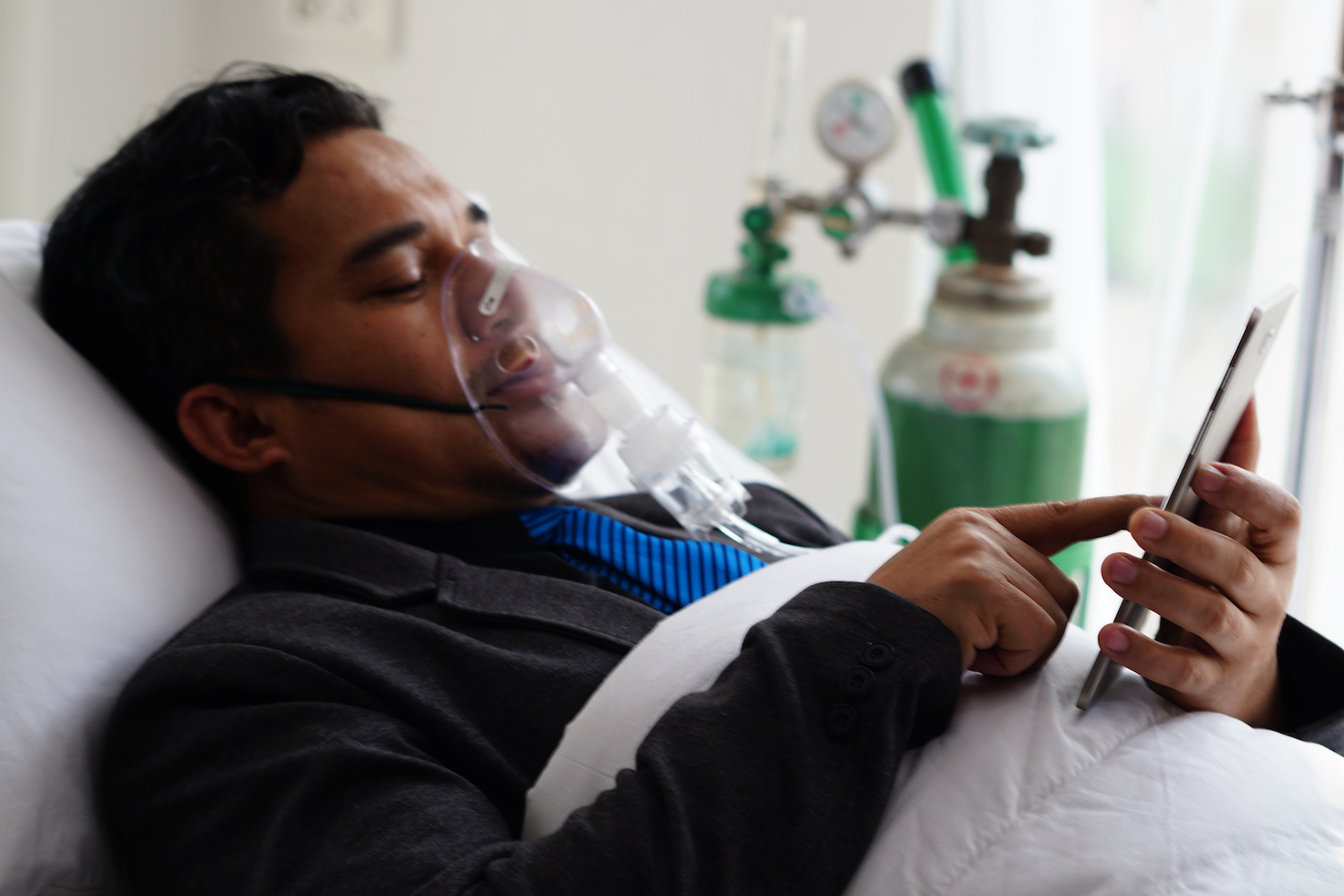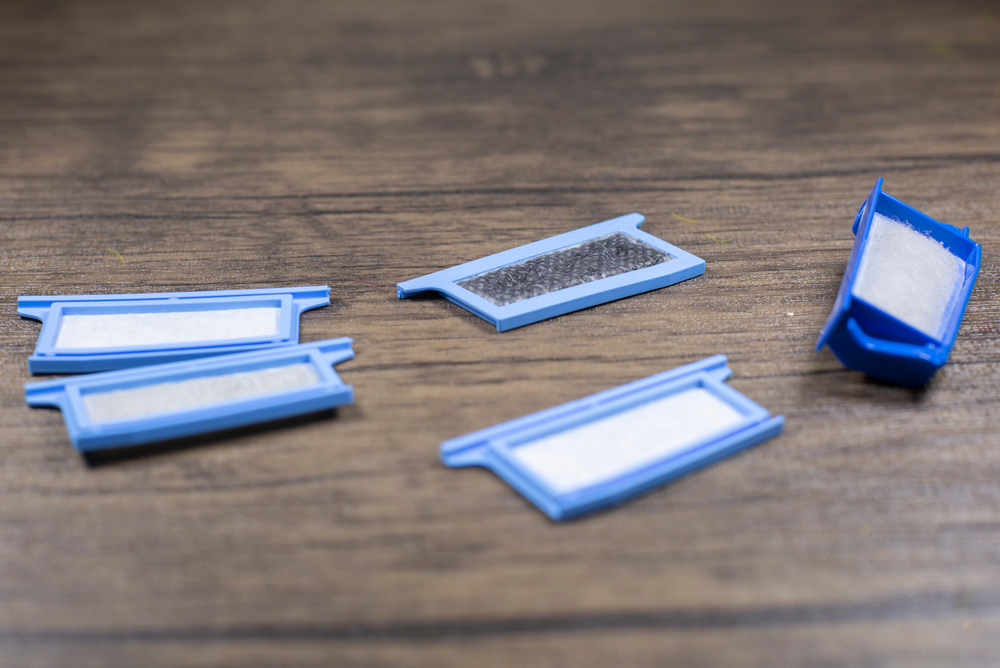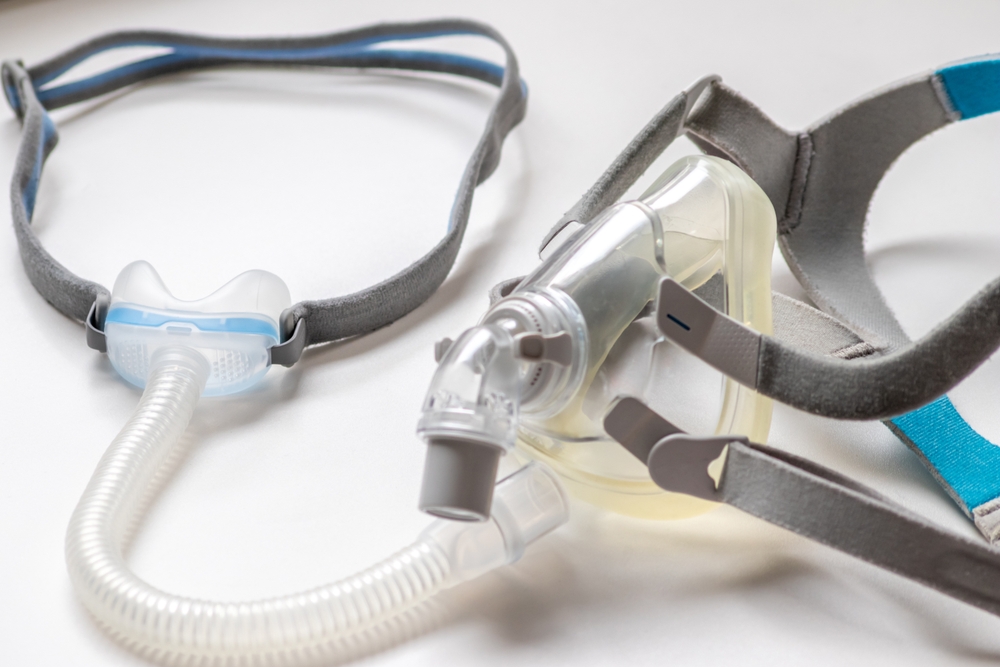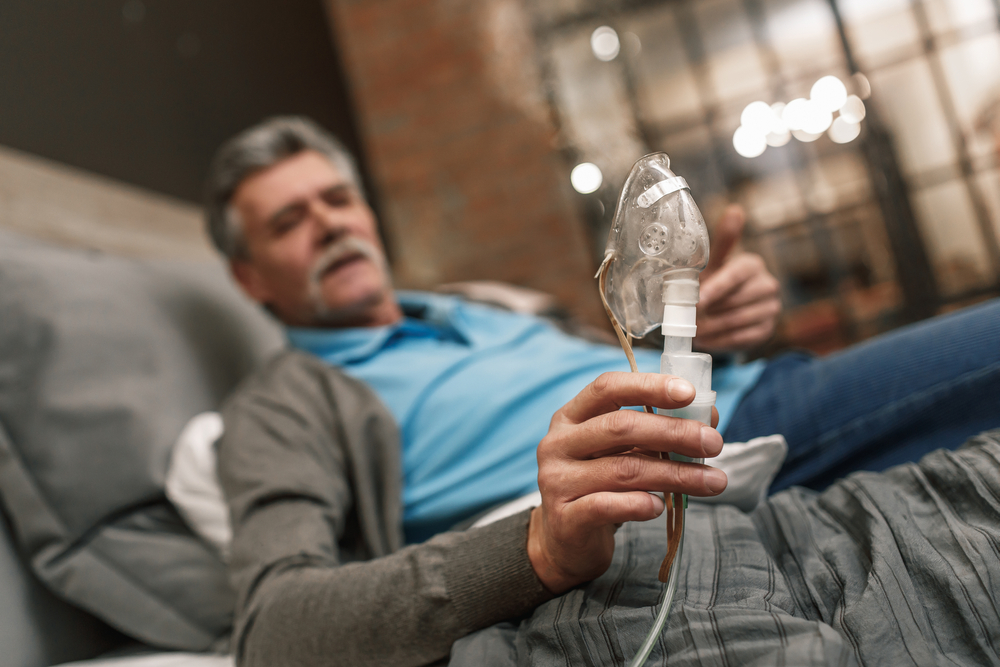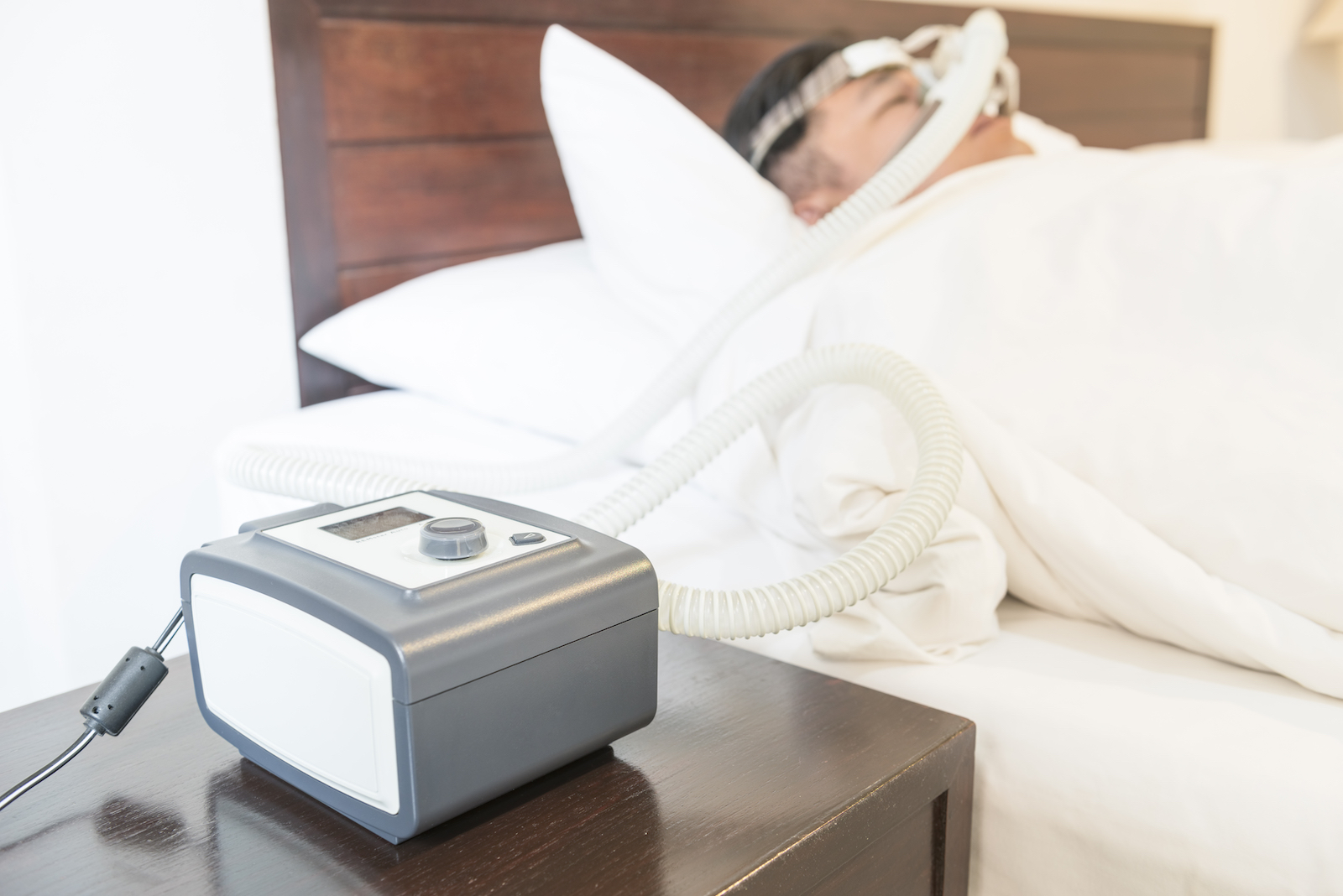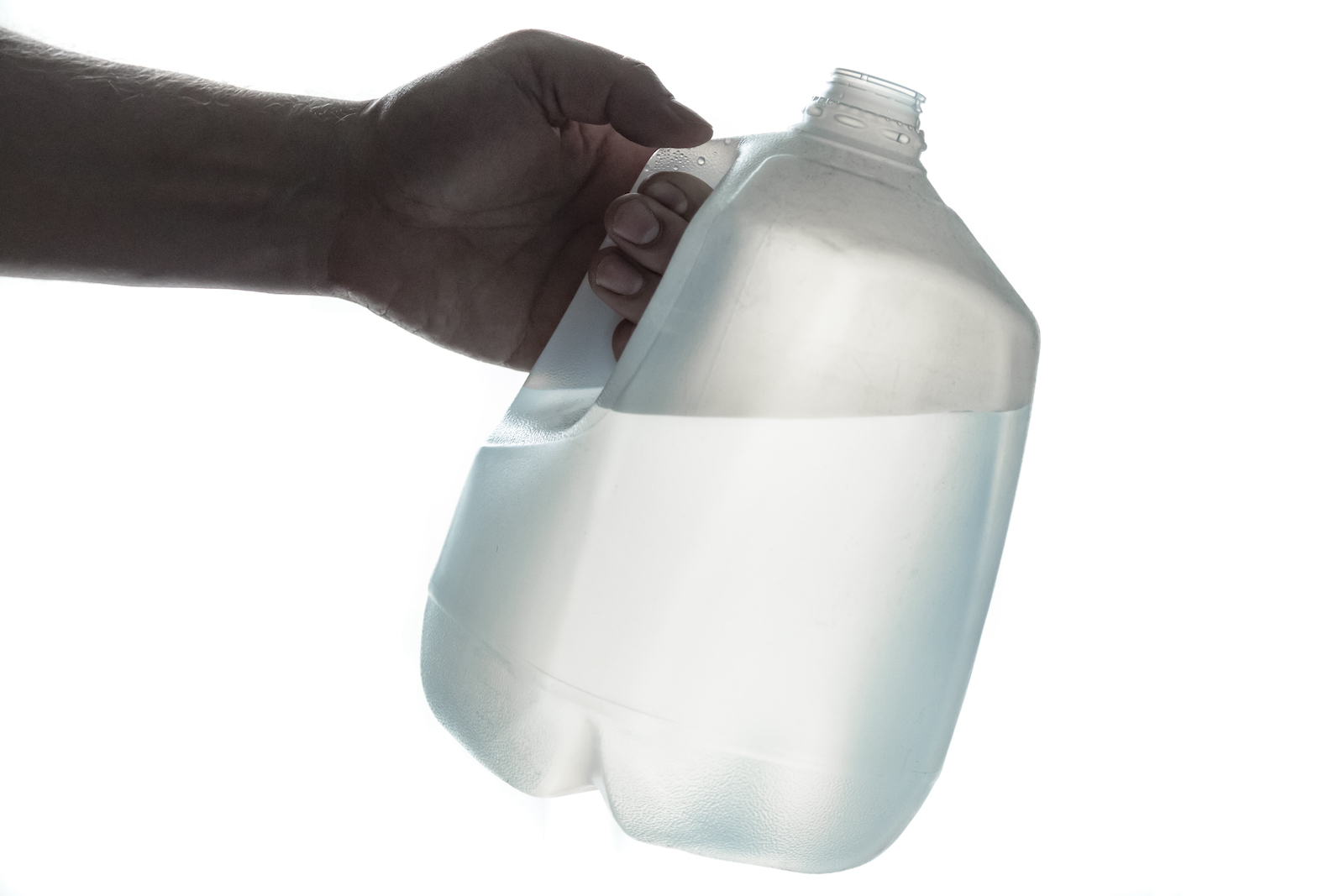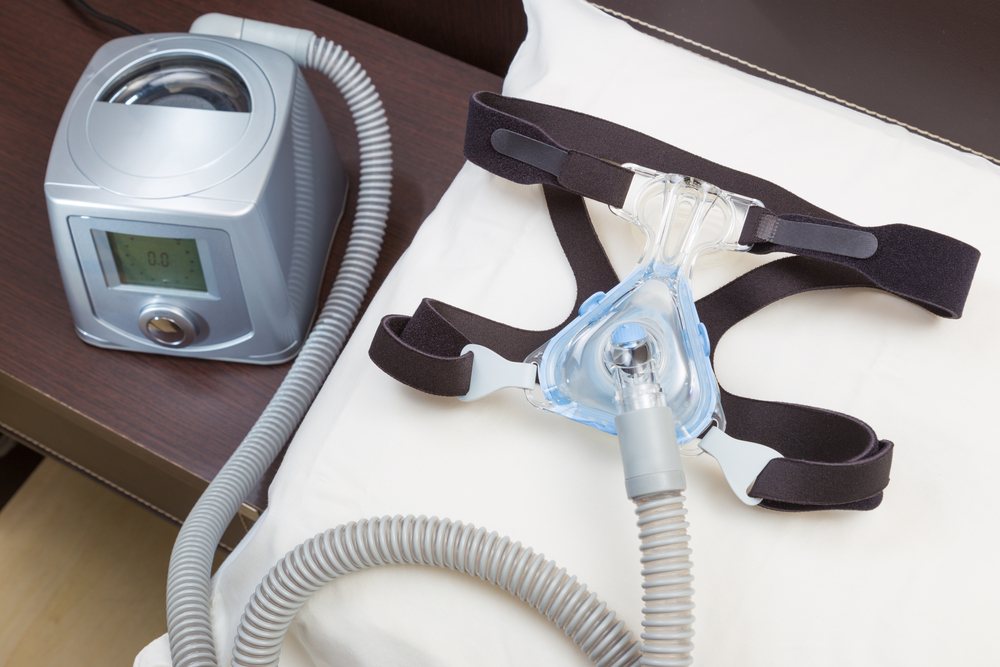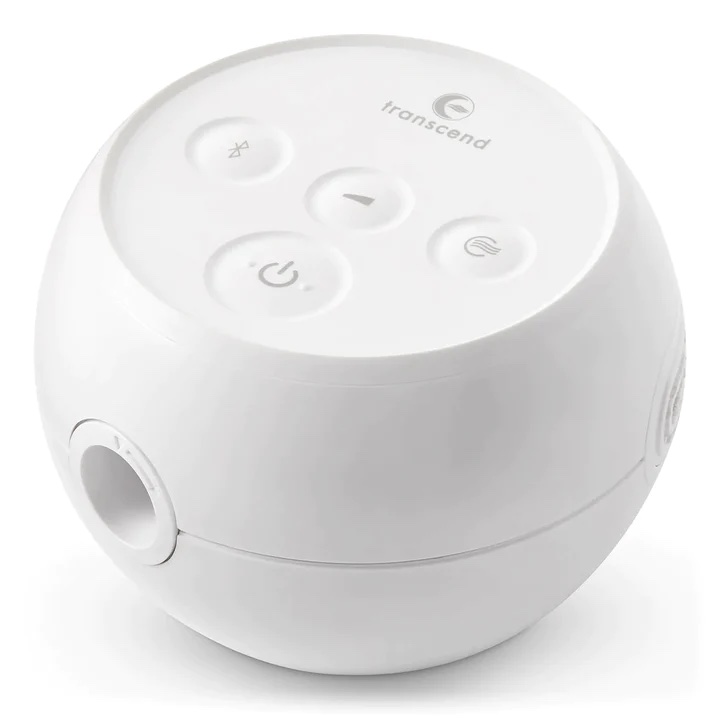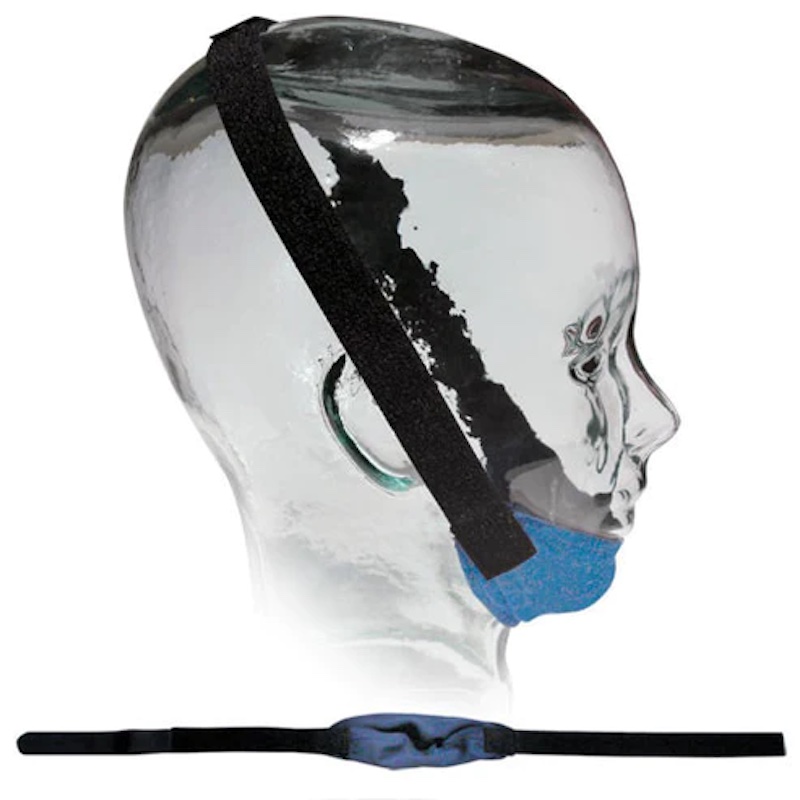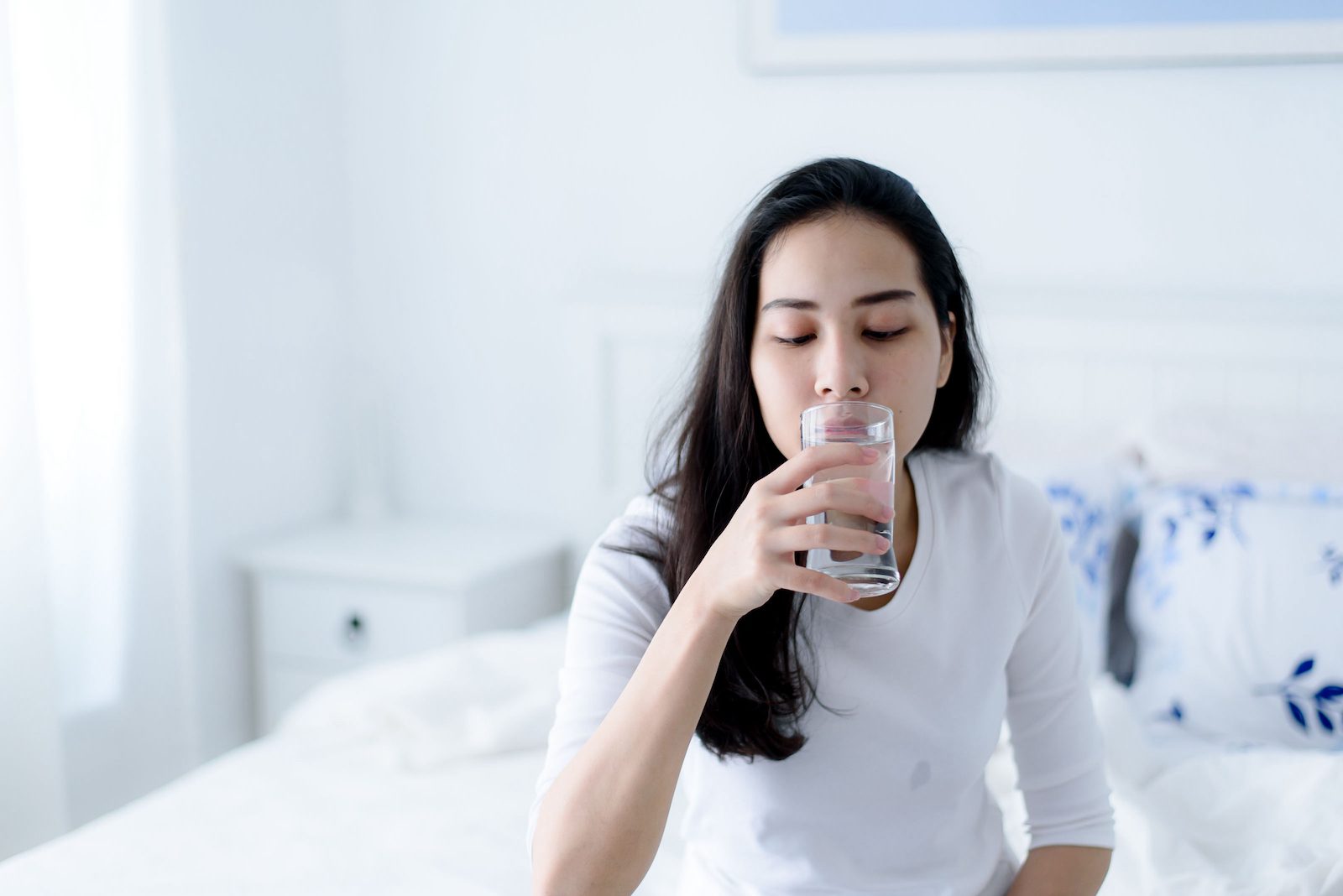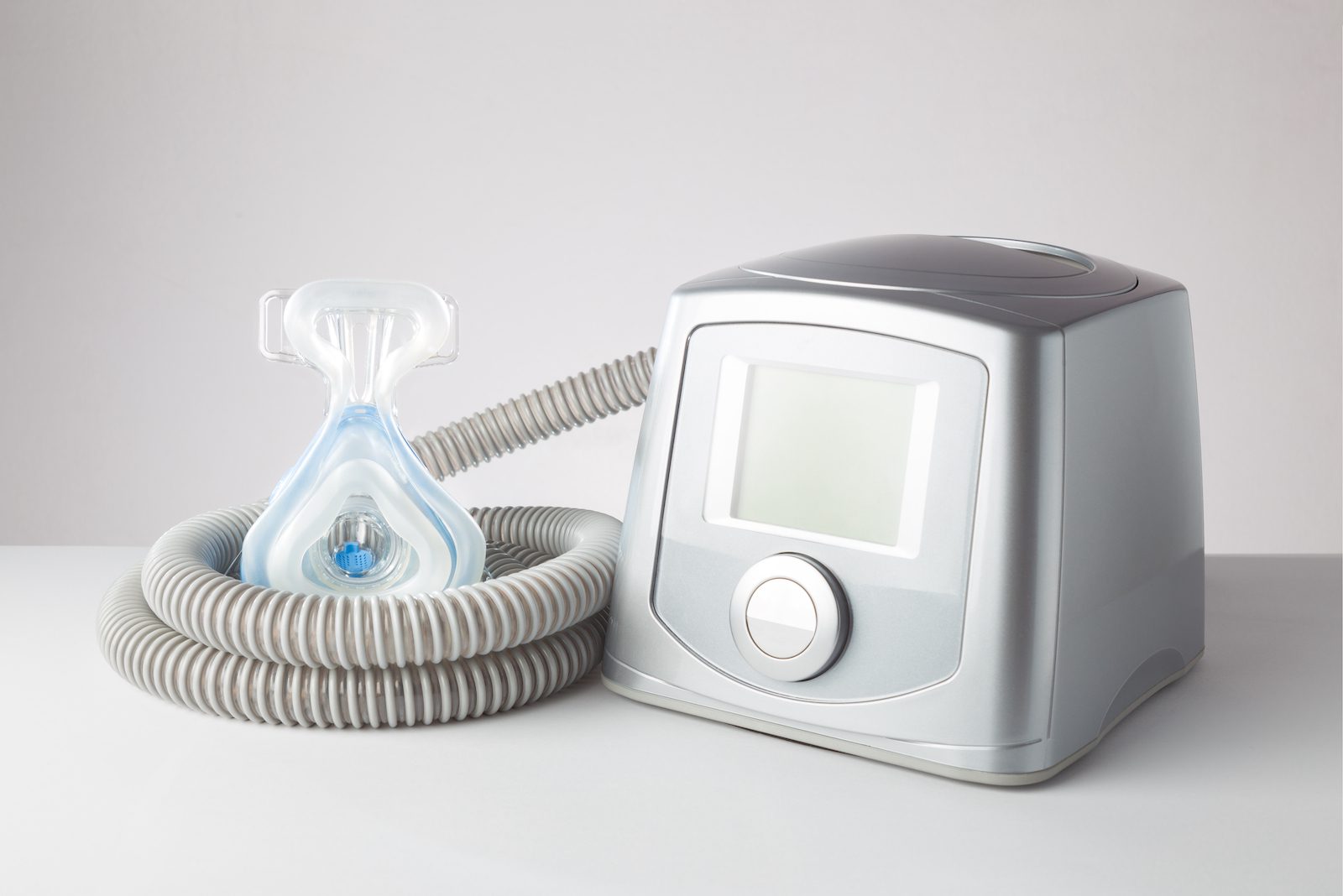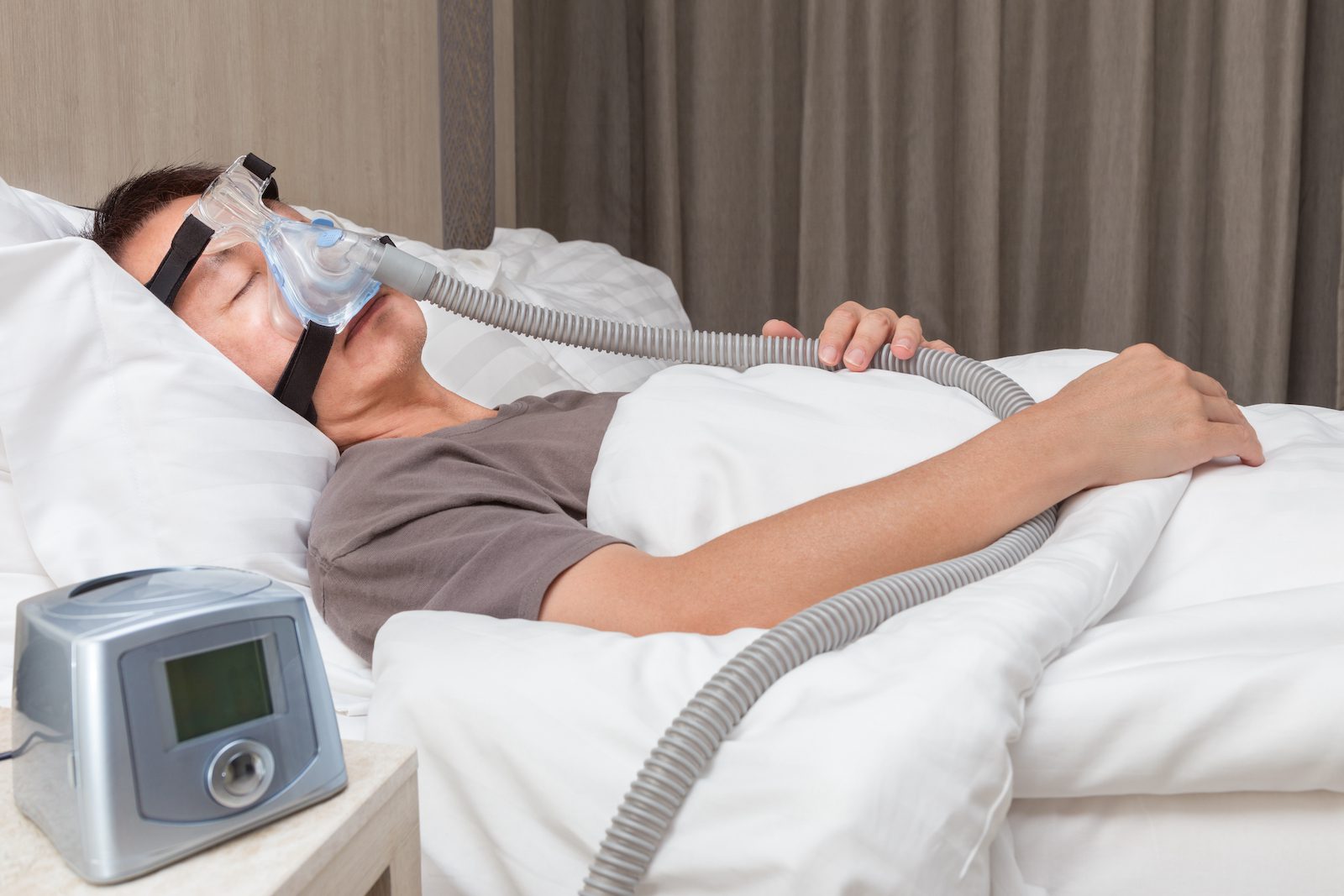One of the most effective treatments for sleep apnea is nightly use of a continuous positive airway pressure (CPAP) device. To prevent breathing disruptions during sleep, a CPAP machine directs a consistent stream of pressurized air through a tube and mask and into the upper airway.
CPAP machines can improve sleep apnea, but they can also cause side effects. We describe a range of CPAP problems and troubleshooting steps to resolve them.
Common CPAP Machine Problems
While many different issues can arise when using a CPAP machine, you can often resolve them with straightforward steps. Your doctor can also provide recommendations and make sure the device is effectively treating sleep apnea.
Your CPAP Causes Dry Mouth
Pressurized airflow can dry out the inside of your mouth when you’re sleeping. Heated humidifiers are typically integrated into CPAP machines to add moisture to the airflow and reduce dry mouth.
If you are using a nasal mask or nasal pillow, oral dryness may be tied to breathing through your mouth, which allows pressurized air to leak out. To address this, ask your doctor about a chin strap to hold your mouth closed while you sleep.
Your CPAP Causes Nasal Problems
Pressurized air can dry out and irritate the nasal passages. This can lead to a runny nose or congestion, which can further interfere with breathing. Irritation and drying can also cause nosebleeds.
Your doctor may suggest several steps to reduce nasal problems while using CPAP, including:
- Using the built-in heated humidifier
- Switching to a mask that covers both the nose and mouth
- Trying medications or other treatments for underlying causes of congestion
- Rinsing out your nasal passages with saline
- Following manufacturer instructions to clean your CPAP machine and keep it free of germs
It’s Hard to Fall Asleep When Using Your CPAP
You may find it challenging to fall asleep when using a CPAP machine. The more you use your device, the quicker you can adjust to it. You can even use the device while awake to get accustomed to how it feels. Addressing other CPAP problems, such as issues with the mask and fit, may also enhance your comfort.
Optimizing your sleep habits may also help you fall asleep easier when it’s time to put on your mask. Try improving your sleep by avoiding caffeine after lunch, developing a calming bedtime routine, and eliminating excess noise and light from your bedroom. Relaxation practices such as mindfulness meditation may also help.
Your CPAP Machine Causes Bloating
If you unwittingly swallow pressurized air from a CPAP device, it may contribute to flatulence, belching, or bloating. Approaches to reducing gassiness include:
- Wearing a chin strap to keep your mouth closed when using a nasal mask or pillow
- Taking medications to reduce bloating
- Sleeping on your left side
- Asking your doctor about switching to another type of PAP device
Your CPAP Machine Is Loud
Although CPAP machines are usually quiet, a noisy device could bother you or your bed partner. If a loud CPAP is making it difficult to sleep, ask your doctor about trying a different model.
Noise may also come from the mask, mask valve, or a clogged filter. Your doctor can help you explore mask options to find the best fit and give you guidance for checking the mask valve. Regular cleaning can also promote optimal performance of your CPAP device.
It’s Hard to Exhale When Using Your CPAP
If you’re not used to it, exhaling into a stream of pressurized air may be uncomfortable, especially if your CPAP therapy requires a high level of pressure. If you encounter this problem, talk to your doctor.
Your doctor can review data from your device and determine whether to adjust your CPAP pressure settings. They can also provide guidance about using a pressure ramp, which slowly increases the air pressure as you’re falling asleep.
Additionally, your doctor may suggest settings for pressure relief, which involves a small decrease in air pressure each time you exhale. In some cases, it may be possible to try a different kind of PAP machine that allows for more variation in pressure levels during the night.
Your CPAP Causes Eye Irritation
Eye irritation or dryness can occur if pressurized air leaks out of the mask and gets in your eyes. Typically, the best solution is eliminating the air leak by adjusting your mask so that it forms a tighter seal against your face.
Your CPAP Causes Chest Discomfort
You may notice discomfort in your chest muscles when you get started with using a CPAP machine. Usually, this sensation goes away as you get accustomed to using the device. If not, talk to your doctor about potential solutions, including changes to your CPAP pressure settings.
CPAP Mask Issues
Ideally, a CPAP mask creates a tight seal with your face while remaining comfortable to wear throughout the night. A number of CPAP side effects are linked to mask problems.
To troubleshoot these issues, you can modify how a mask fits or change the type of mask you use, the shape of the mask, the headgear or straps, or the cushions that fit inside the mask.
You Are Having Trouble Getting Used to Your CPAP Mask
It’s normal to take a while to adjust to using a CPAP machine and mask. But the longer you wear your mask early on, the more quickly you will get used to it. If issues with wearing the mask persist, talk to your doctor about strategies for troubleshooting or choosing a new mask.
Your CPAP Mask Leaks Air
Pressurized air can escape if your mask does not form a seal with your face, and an air leak can decrease the effectiveness of CPAP therapy. Adjusting the fit of your mask can stop many air leaks.
To test the seal of your mask, start by turning on your CPAP without the mask on and notice the sound of air coming through. Then put on the mask and tighten the straps. You will know that you have a good seal if you can’t hear air flowing through the mask once it’s in place.
If you can’t create a good seal or if adjusting the mask creates discomfort, talk to your doctor about other options, such as trying a different type or size of mask.
Your CPAP Mask Doesn’t Fit
The fit of your CPAP mask is something that you can modify using the headgear or straps that position the mask on your face. If you are unable to find a good fit even after adjusting the straps, you may need a different mask or cushion.
Your CPAP Mask Hurts or Irritates Your Face
A common CPAP mask problem is discomfort or irritation of the skin or facial muscles. You may notice facial pain or redness around the mask or its straps.
As an initial step, adjust the mask so that it is not too tight. While a good seal is essential, you don’t want to overtighten the straps, which can pull the mask too firmly against your face.
In some cases, it may be beneficial to try a different or softer cushion. Another option may be switching to a mask that is lightweight or that has a different shape. Trying out different headgear may help resolve issues with facial pain or skin irritation.
Your CPAP Mask Causes Claustrophobia
Claustrophobia, or a fear of feeling closed in, can arise when wearing a CPAP mask. One way to counteract claustrophobia is to gradually increase your comfort level with the mask. For example, you can briefly wear the mask when you’re awake and watching TV, and wear it for a bit longer each day.
If this approach doesn’t help, you can seek out a new mask with a less bothersome profile or design. You may also wish to consult a mental health professional for help managing claustrophobia.
Your CPAP Mask Won’t Stay On
Adjusting the straps so that your CPAP is not too loose can help hold the mask in the right place. Check that the mask is tightly in place while on your back, side, and stomach, which helps keep the mask from falling off if you change your sleep position.
Your CPAP Mask Gets Dirty
Regular cleaning can prevent your CPAP mask from becoming grimy. Wipe down your mask daily, and clean all the mask parts once per week. You should also clean the headgear every week.
When cleaning the mask, make sure to only use cleaning products that are recommended by your doctor or the CPAP’s manufacturer. Follow their guidance about when to replace the mask, cushions, or other CPAP components.
Your Glasses, Hair, or Facial Hair Affect Your CPAP Mask
It is normal to need to try out several CPAP masks and straps before finding the one that works best for you. This may be especially important if you want to wear glasses while using a CPAP machine in bed before falling asleep. A different mask or headgear may also be helpful if you have a hairstyle or facial hair that affects the positioning or comfort of the mask.
Other CPAP Problems
You may also need to troubleshoot other issues that can interfere with regularly using a CPAP device.
Your CPAP Tubing Has Condensation
The term “rainout” describes the buildup of condensation that happens when humidified air flows through cold CPAP tubing. Generally, the best solution is to use heated tubing. But if that is not an option, you can try wrapping a towel around the tubing as a form of insulation.
The CPAP Mask Complicates Nighttime Bathroom Trips
When you have to get up from bed at night to go to the bathroom, it may be easiest to keep your CPAP mask on and unhook the mask from the tubing. This can be particularly useful if you have arthritis in your hands or have other issues that make it difficult to take the mask on and off.
Your Bedding Isn’t Working With Your CPAP Machine
If your CPAP tubing is getting caught up in your bedding, you can try using CPAP accessories meant to hold the tubing in place. Specially designed pillows are also available that can accommodate tubing or a mask.
You Are Still Snoring or Having Other Symptoms
If you are still snoring or experiencing other sleep apnea symptoms despite using a CPAP machine, it may be a sign that CPAP therapy is not working. There are many reasons why this can occur, so it’s important to talk to your doctor about optimizing your sleep apnea treatment.
Still have questions?
Sleep apnea products can be confusing. If you need individualized assistance, post your question to the Sleep Doctor forum.




